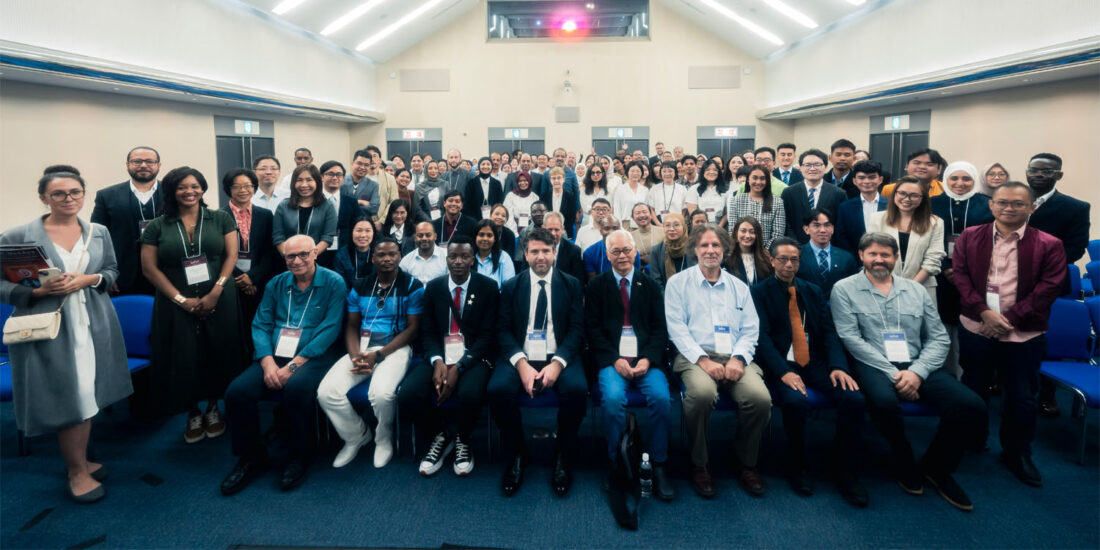The Kyoto Conference on Arts, Media & Culture (KAMC2024) was held alongside The 15th Asian Conference on Media, Communication & Film (MediAsia2024) in Kyoto, Japan, from October 15-19, 2024. The event welcomed over 350 delegates from more than 40 countries and invited keynote speakers from Hokkaido University, Japan, the University of South Florida, United States, Osaka University, Japan, and Nanyang Technological University, Singapore. IAFOR was also proud to organise a panel presented by the first cohort of our IAFOR Global Fellows Programme in cooperation with the IAFOR Research Centre at the Osaka School of International Public Policy (OSIPP), Osaka University, Japan.
From news media to indigenous art, invited keynote speakers and panellists at KAMC/MediAsia2024 addressed timely questions around power and representation. Manifested in various forms – (neo)colonialism, cultural hegemony, and capitalism – power struggles and social injustices continue to perpetuate sociopolitical structures through the misuse of media. Those who control the means of telling stories, control the world.
Conference Report and Intelligence Briefing 2024 – Issue 6 – KAMC/MediAsia2024
Editor: Joseph Haldane
Authors: Melina Neophytou and Briar Pelletier
Published: November 28, 2024
ISSN: 2759-4939
In partnership with: The OSIPP-IAFOR Research Center
Subscribe and Stay Informed
Receive key insights directly to your inbox.
Stay informed of the latest developments in academia.
100% free to read, download and share.
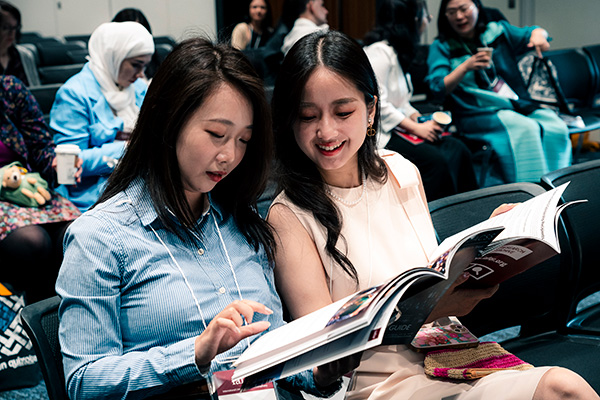
Contents
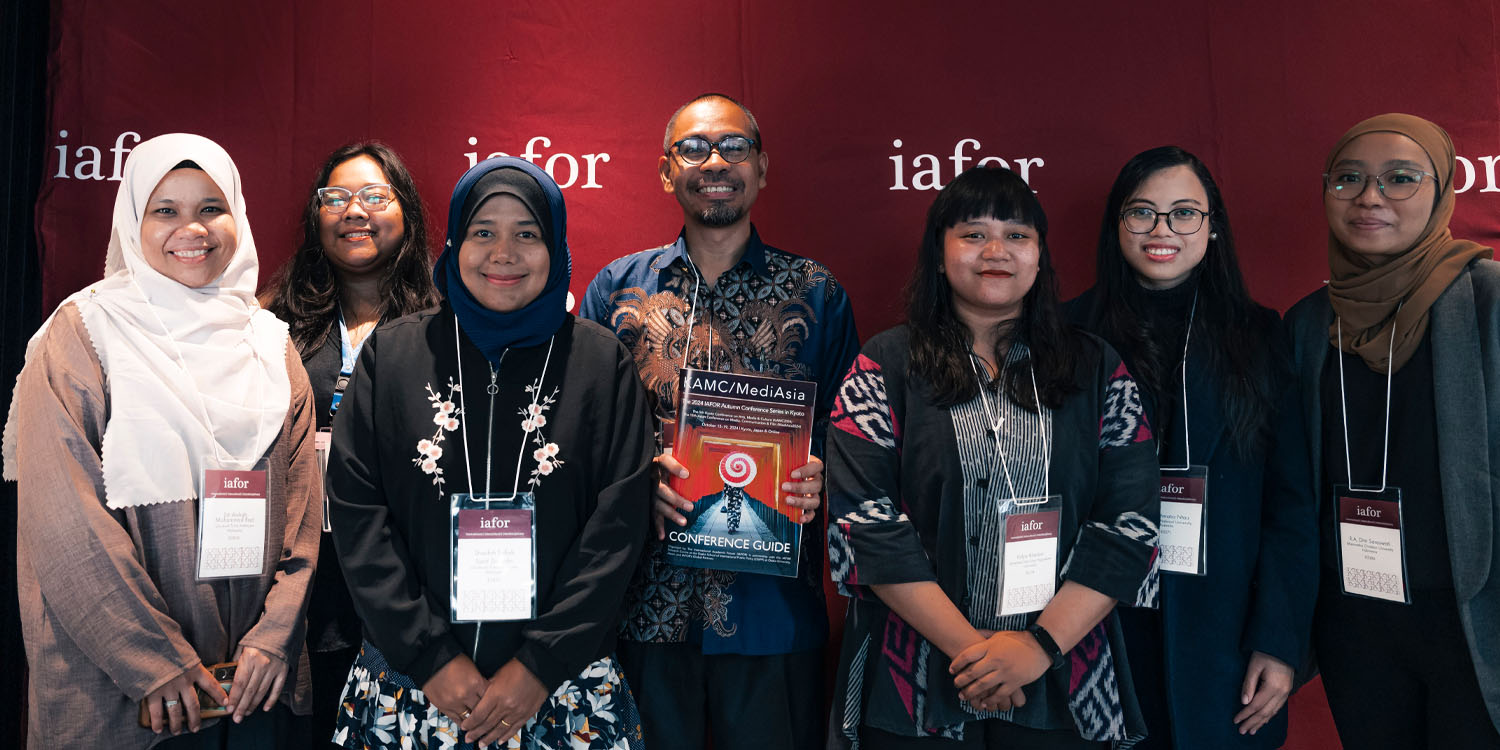
Introduction
Power is at the heart of human existence and civilisation. Earlier this year at The European Conference on Education (ECE2024) and Arts & Humanities (ECAH2024), IAFOR Provost Professor Anne Boddington quoted Plato in saying that those who tell and claim the stories, control the world; and the stories we are told and tell are the flesh on the bones of power. Complementary to this discussion, this year’s Kyoto Conference on Arts, Media & Culture (KAMC2024) and Media, Communication & Film (MediAsia2024) expanded on this idea by appending another layer: those who control the means of telling stories, control the world.
Since the 19th century, the arts and media have been regarded as a means of raising awareness and informing citizens of local and global issues. In this regard, the media has been viewed as a cornerstone of democracy, performing watchdog duties and ensuring unbiased communication between and across all segments of society. Media in itself is a powerful tool that can shape public opinion. Many have tried to abuse this power. Either for personal gain, ensuring the dominance of specific communities in society, or for furthering national interests, the media has proven to hold significant political power desired by various individuals and entities. Whoever controls the media, controls the narratives being told and, consequently, the world.
In the new global and digital era, where the fate of individuals, social groups, and countries can be determined with only one click, it is important to remain extremely vigilant against disinformation, exclusion, and hateful behaviour online. Both consumers and producers of media content have a responsibility to act in a way that impacts society positively. How to create responsible media remains a difficult task, with responsibility having to flow from the individual first. Notions such as censorship and self-control are hard to implement and, although applied with good intention, can often have a negative effect on freedom of press, freedom of expression, and inclusive representation.
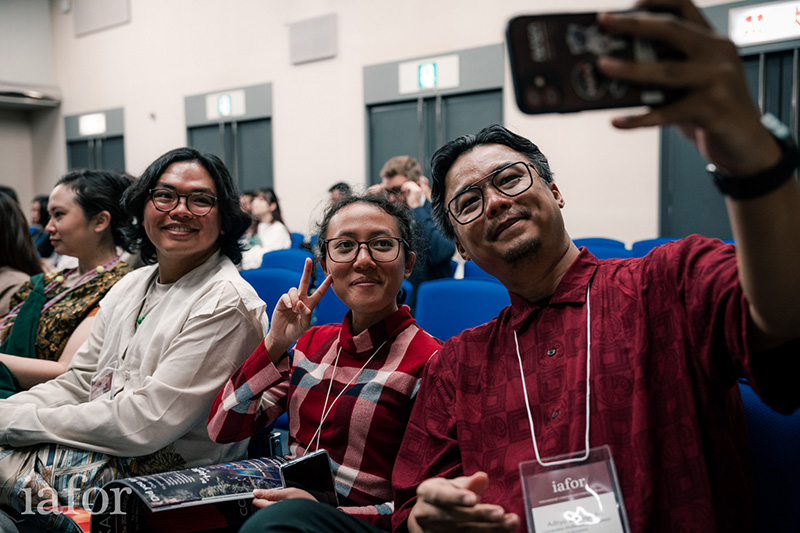
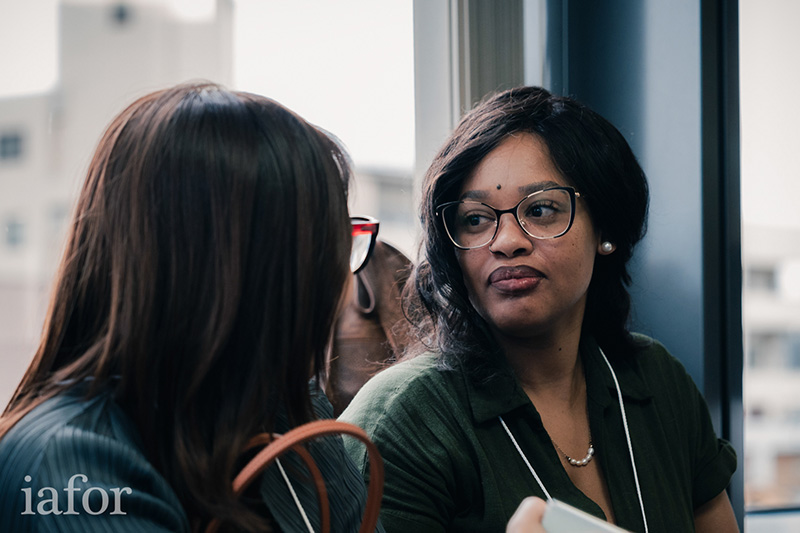
From news media to indigenous art, invited keynote speakers and panellists at KAMC/MediAsia2024 addressed timely questions around power and representation. Manifested in various forms – (neo)colonialism, cultural hegemony, and capitalism – power struggles and social injustices continue to perpetuate sociopolitical structures through the misuse of media. The plenary talks fell well under IAFOR’s four key Conference Themes: Humanity and Human Intelligence, Technology and Artificial Intelligence, Global Citizenship and Education for Peace, and Leadership.
Professor Jeffry Gayman from Hokkaido University, Japan, analysed the representation of the indigenous Japanese Ainu community within media and film, the observed prejudice and discrimination against them, and their own forms of resistance to exclusion through the production of their own indigenous media (Section 2). Professor James S. Moy from the University of South Florida, United States, gave a historical overview of the rise of western cultural and artistic hegemony and how, recently, Asian Art is challenging hegemonic structures of colonialism and capitalism (Section 2). The two keynote speeches effectively combined the IAFOR themes of Humanity and Human Intelligence as well as Global Citizenship and Education for Peace in their attempt to raise awareness of marginalised groups within society and indigenous people, their right to expression and representation as a human right, and how their fate is being transformed within the context of a globally-oriented society and politics.
IAFOR also recently welcomed its first cohort of Global Fellows to Japan through our Global Fellowship Programme, geared towards early and mid-career East Asian scholars around the theme of ‘independent voices’. Two of these fellows, Ms Azusa Iwane and Dr Shuqi Wang, alongside Ms Sonja Viktorija Anić and Dr Virgil Hawkins from Osaka University, Japan, formed a panel discussion on the political side of media and around the topic of media and power (Section 3). Touching upon issues of agenda-setting and power-seeking behaviour of economic and political elites, they examined power struggles on both the micro- and macro-level in Japan and the wider Asia-Pacific region. The discussion responded to issues of Leadership and Global Citizenship, with a focus on the responsibilities of media in the new digital era.
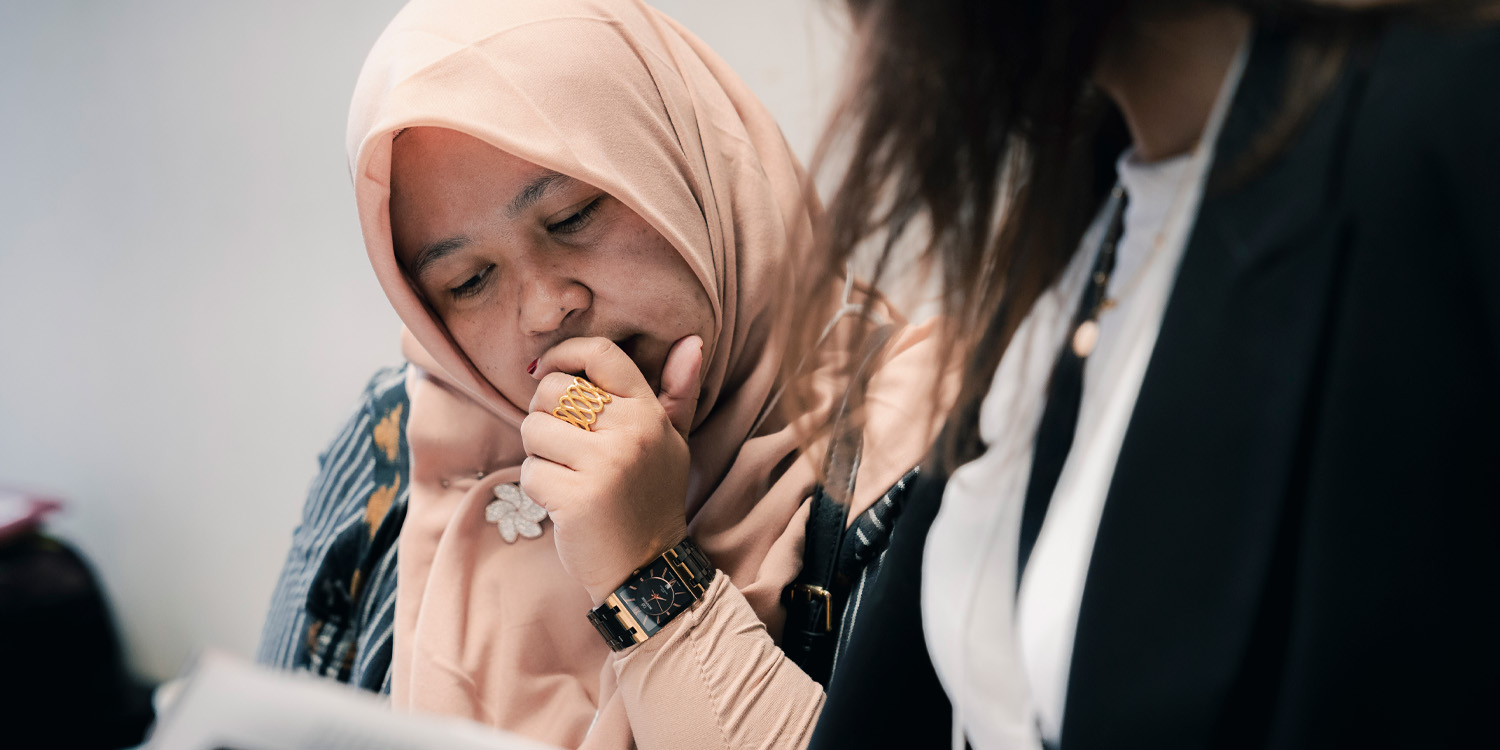
The Forum discussion, IAFOR’s travelling intellectual caravan on Global Citizenship, made a stop at Kyoto as well to discuss ‘Digital Citizenship and Media’ in the context of global citizenship (Section 4). Delegates had the opportunity to share their perspectives and expand upon the topic in an open-discussion style forum about what responsible consumption and production of media looks like and how we can assume more responsibility within our online behaviour.
With the decentralisation of western art and the technological advances that challenge traditional notions of surveillance and censorship and allow for surveillance from the bottom-up, the future of media news and the art market seems to be at a turning point. Our keynote speakers and panellists shared their opinions on the future of digital media and indigenous art, being enthusiastic about the power that is slowly conferred upon the marginalised, albeit remaining cautious of neo-colonial and capitalist tendencies of those in power (Section 5).

IAFOR Chairman & CEO, Dr Joseph Haldane
Within this academic context, holding a conference on Arts, Media, and Culture in Kyoto, Japan’s ancient capital, was the most appropriate choice. Due to a flourishing contemporary arts scene, with galleries, museums, and cultural institutions that showcase both Japanese and international works, and a rich cultural heritage with 17 UNESCO World Heritage Sites, Kyoto combines traditional and modern art and culture within the city’s very infrastructure. This ongoing endeavour of reconciling the old with the new makes Kyoto the perfect backdrop for a conference dedicated to the fields of Art, Media, and Culture. In his welcome address, Chairman and CEO of IAFOR, Dr Joseph Haldane, spoke of his special connection to culture and the arts being his motivation to become an academic, and how this direction led him to eventually settle in Japan. At the heart of IAFOR’s inception lies his personal fascination with multiculturalism and art. Therefore, the Kyoto Conference Series occupies a special place in his and IAFOR’s heart.
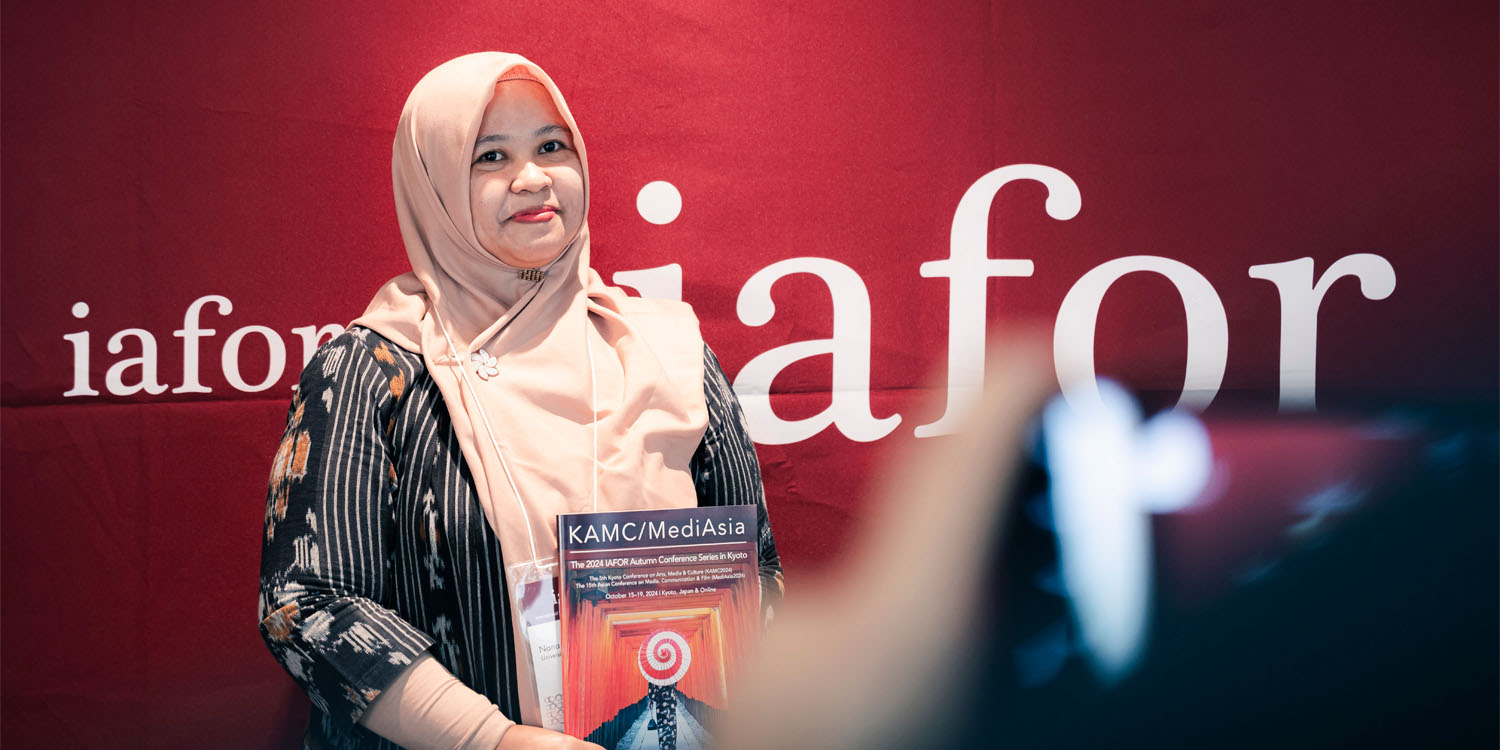
2. Indigenous Voices Within Constructs of Power
Minority voices have historically found it hard to speak up and stand out within a system designed by and exclusively catering to the worldview of the west. The Eurocentrist framework structured by the rules of capitalism continues to give prominence to art and knowledge created in the image of the west. Marginalised communities and artists are tasked with permeating the regimented Western hegemony present within institutions such as the art market, exhibition spaces, and news media, all entrenched in a capitalist framework. Professor James S. Moy and Professor Jeffry Gayman took the stage not only to discuss non-Western and indigenous voices in media and the arts, but to deconstruct the institutions in which they operate within in order to be heard. A key obstacle of note in both presentations was the institution, in regards to both art and media, but on different scales.
2.1. Forms of Resistance from Indigenous Art and Media
2.1.1 Emerging Indigenous Art and the Western Art Market
Western art history has held undisputed power over the global art market for centuries, with Professor Moy’s presentation tracing this grip back to the Italian Renaissance for three reasons: visual perspective, patronage, and the art market model, all of which have remained persistent. Over time, these became an European-American tradition, establishing a legacy that carries on today. By the mid-20th century, the modernist trajectory of European-American Art - ‘with its relentless pursuit of the new’ - had come to a point where it could not be so easily integrated into the art market - claimed by the institution via purchase, its exhibiting work within its venues or, more importantly, re-sold. Professor Moy noted a major shift by the mid-20th century, reminding us that happenings and performance art had become spontaneous, seldom planned, and outside the art venue, and that American painter John Baldessari was setting his work ablaze by the 1970s.
Post-modernism arose, encouraging artwork which ‘cannibalised the entire historical legacy of Western art history.’ However, even artworks which attempted to resist the art market and its institutions assimilated into their realm through other means: DVDs featuring recordings of performance pieces, documentaries, NFTs and AI-driven simulations, are readily stocked in museum gift shops and webstores.
Art gallery owners, collectors, and auction houses turned their gaze away from the West, with some asserting the need to exceed the limits of ‘mere ethnic envy - we should perhaps embrace the world, instead of just Euro-American artwork’, Professor Moy explained. And thus continued the linear march forward in search of the next big thing, which we have come to know as Postmodernism, then Post-colonialism. But as Professor Moy points out, ‘the very act of embracing and talking about it, became a sort of new kind of colonisation of the post-colonial tradition.’

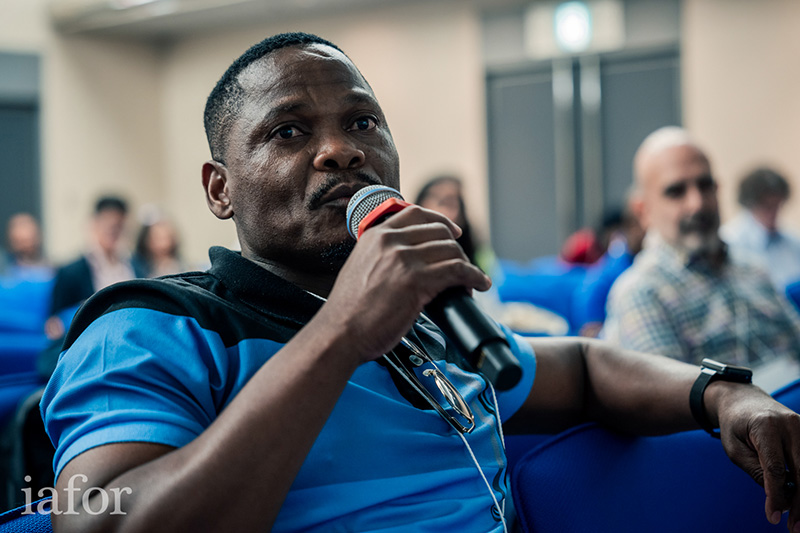
The art scene came to embrace a more ‘diverse’ world, and worked to bring artworks and artists of this coveted diversity into The Grand Tour itself, through expositions like Documenta in Germany and the Venice Biennale in Italy. Documenta in particular, founded in 1955, worked to ‘bring artwork of artists whom the Nazis felt were degenerates’ - ‘degenerate art, or Modernist or Experimental artwork.’ Moy states that things started to change in significant ways after the first Documenta, especially under African curator Okwui Enwezor in 2002.
Professor Moy pays particular attention to Documenta of 2022 as a breakthrough in the exhibition’s tradition: unlike previous Documenta, the 2022 curator team was the first collective of curators, rather than a single curator with a team of advisors. This 2022 team were all from Indonesia. Their method of curatorship was that of a lumbung - an Indonesian ‘rice barn’. They worked collectively, as a community, expelling the idea that one curator administered a hierarchy of inclusion and placement within the exhibition halls: no artwork was removed for not meshing with others. The lumbung approach resulted in a chaotic process incorporating more than 1500 participants - predominantly collectives from the Global South. Documenta 2022 denied the ‘name-brand’ operation of the art market.
Professor Moy noted that this approach denied mere individual expression of a sole artist, or sale to individual collectors or hegemonic state-funded museums. Much like their predecessors in Europe in the mid-twentieth century, these artists refused to sell their art for monetary gain and exploitation by the art industry. Instead, their art is made to convey a clear message of indigenous voices’ insurgence. Professor Moy explained that one particular artwork of contention featured in the exhibition was ‘Guernica - Gaza’ by Mohammed Al Hawajri, which incorporated universally recognisable images of art history including Pablo Picasso’s ‘Guernica’, ‘The Harvest’ by Vincent van Gogh (1888), and ‘Liberty Leading the People’ by Eugene Delacroix (1830), imbuing the context of contemporary Palestinian life into these Western images of renown.
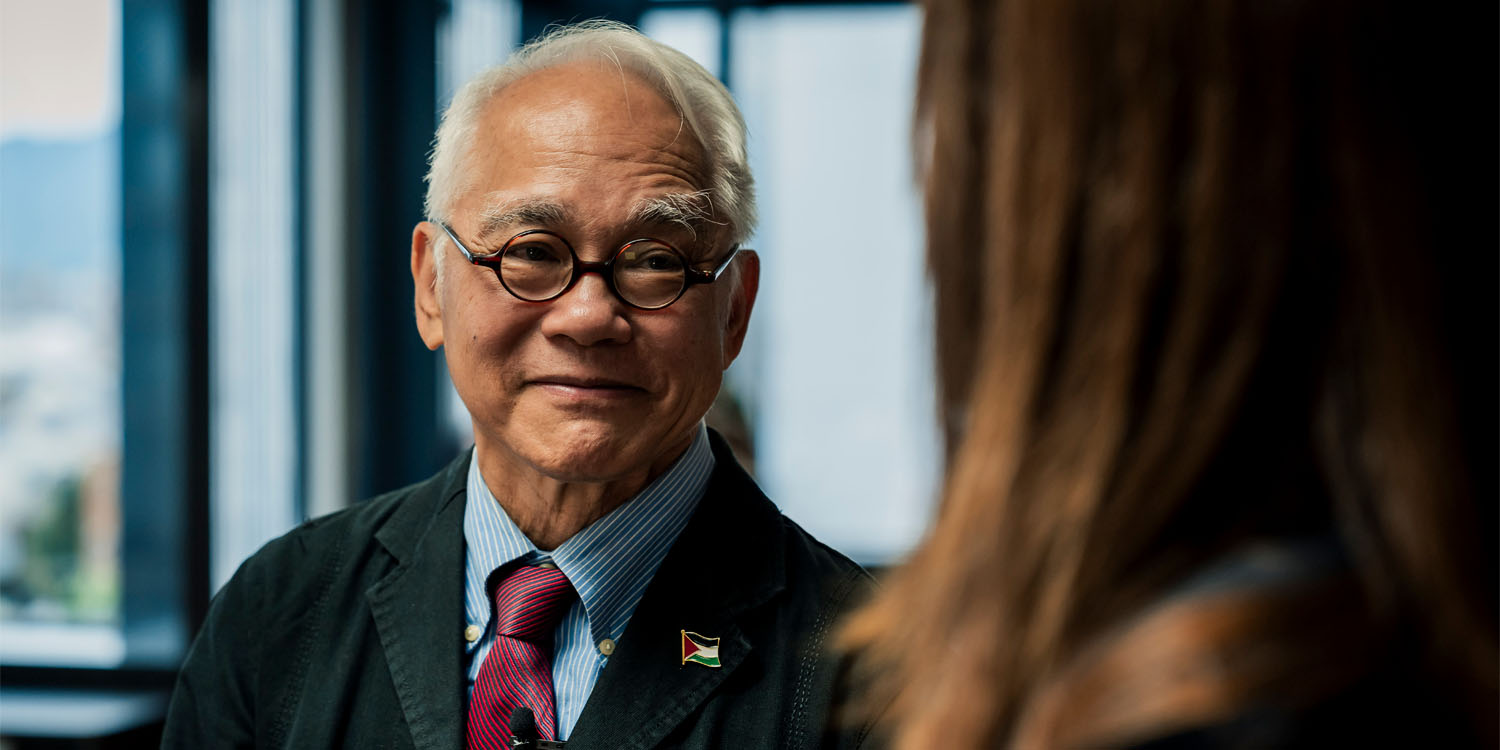
Indigenous voices, as Professor Moy explains, have taken to attaching their own mouthpieces to predisposed institutions within the art world in order to ensure their voices are heard: an indigenous retooling of Western art historical methods and techniques, producing their own indigenous media through them. Professor Moy paid particular attention to Al Hawajri’s rendition of ‘Liberty Leading the People’. The overall composition of the image remains the same, prompting the viewer to recall Delacroix’ masterpiece and its persevering iconography. The artist replaces key symbols to signify the change in setting: Liberty dons Palestinian garb, particularly a keffiyeh scarf, and hoists the Palestinian flag as bodies of slain Palestinians lay at her feet. The original backdrop of Delacroix’ scene was obscured by smoke, whereas Al Hawajri has chosen to depict decimated industrial buildings, hollowed out by airstrikes; images intimately felt by contemporary viewers, who witness such images distributed through media reports on the Gaza conflict everyday. At this, Professor Moy tears up: the scene is intimately felt and known, undoubtedly one of the first images aspiring students of art are confronted with in their inaugural Art History courses, has become tinged with reality when dictated through the hands of Al Hawajri.
This retooling of Western art history invites contention, particularly by those who have remained at its helm for centuries: as Professor Moy pointed out, the Euro-American majority present in its history of creation, patronage, curation, and distribution. German President Frank-Walter Steinmeier opened the festival by condemning the Palestinian artists featured, as well as the festival’s curators, for not featuring Israeli or Jewish artists when openly confronting the Palestinian-Israeli conflict within the exhibition. ‘Clearly, some elements of German society objected to participation in the curatorial trajectory of the Global South… I call it the Global Majority’, said Professor Moy.
One featured artist collective in particular that came under fire by Documenta’s critics was Taring Padi, an Indonesian group of progressive art students and activists. Their response to the criticism, however, placed particular attention on the art market as a machine: ‘we wouldn't be surprised if this Documenta is copied superficially: the art world now loves collectivism, after all.’ However, the group’s statement made a notable distinction: ‘[collectivism’s] working structure is not adaptable to big dinosaur institutions like, say, The Tate. We can only change superficially things there.’ As foretold by Taring Padi, the Venice Biennale adopted the collectivism idea just two years later: the 2024 Biennale entitled Stranieri Ovunque - ‘Foreigners Everywhere’ - made both the artists and the visitors all foreigners. ‘No one was privileged with a position of ownership… the idea of a single artist, a name-branded artist, has been tossed’ explained Professor Moy.

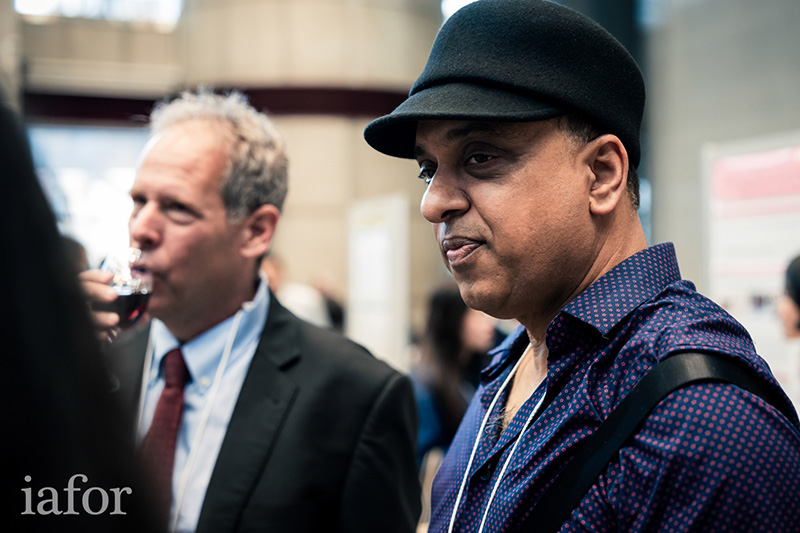
Power was purposefully stripped by recent organising bodies of these major exhibition organisers in recent years, but the grip a centuries-old tradition of power has on the Euro-American centric tradition of exhibition is difficult to break free from. Professor Moy remarked that many visitors to the 2024 Venice Biennale mistakenly attributed fluorescent neon signs placed throughout the exhibition spaces to a single artist, Claire Fontaine, not realising that Claire Fontaine was actually a collective of artists. There still remains an intrinsic desire for the commodification and name-branding of artworks - to attribute power, to an individual person - especially within institutionalised art spaces where such inclinations have become ritualised. Even with the rise of voices, perspectives, and practices of the Global South, the western hegemonic conditioning is proving difficult to shake.
Professor Moy explained that the gallery and museum will not go away: the world has moved from industrial production to a more capitalism-driven format - financial production. ‘Asian art is on the rise... contrary to what one may believe about inclusion and diversity’ said Professor Moy. Today, Asian art collectors find themselves in a seat of power within the art market: Western-owned galleries and art exhibitions cater to them. In a post-presentation interview with IAFOR, Professor Moy said it's hard to tell if western art hegemony will eventually erase Asian cultural distinctiveness in art, but it's always a risk. For any non-western or indigenous artwork to be of value, it must somehow be linked to Western art history or media formats. One delegate posed a question to Professor Moy, particularly on his thoughts on protest artwork and exhibitions like Documenta in what the delegate described as an increasingly ‘normalised’ political and socio economic environment. Professor Moy expressed his desire to see this as becoming more prominent, even though they do not sell well in the art market as it is now, echoing the shared sentiment of Taring Padi’s members.
2.1.2 Indigenous Media as a Form of Resistance
Professor Gayman’s presentation took this conclusion in a more hopeful direction in regards to media and indigenous voices. He discussed a different form of re-possession of established Western hegemonic constructs of power: indigenous voices and media, in particular the Ainu, an indigenous group in northern Japan, and their environmental protest activities with media in mind. Professor Gayman’s presentation provided examples of media and art being both a catalyst for the Ainu in the form of cinema, and a conduit for them in the form of broadcast and social media outreach.
He opened his presentation with a web article image of Satoshi Hatekeyama, an Ainu activist, fishing on the shoreline of a lake. Professor Gayman explained that Hatekayama was purposefully fishing in that location without a permit, and using the media outlet to ‘garner the public attention that would accrue to him getting arrested.’
Indigenous voices have historically been oppressed. Professor Gayman explained that one of the missions of Indigenous Peoples’ Rights International (IPRI) is to broadcast such actions by indigenous persons, in an ongoing attempt to bring indigenous peoples’ actions to the world. IPRI recognises that indigenous peoples are ‘the frontline defenders of biodiversity, cultural heritage, and sustainable development… indigenous communities are especially vulnerable because their lands hold vast reserves long-coveted by corporations seeking to exploit them for profit.’ Indigenous peoples find themselves criminalised for protecting their lands, living in poverty, and facing threats of violence. Professor Gayman mentioned that indigenous groups are at times labelled as ‘insurrectionists’ or even ‘terrorists’, mentioning The Philippines' distinction as an example. For Professor Gayman, it is very important ‘as a prerequisite for achieving social justice’ that we are conscious of these issues in regards to media production and media consumption.
In regards to Ainu-created media, Professor Gayman established a hard line between ‘Other-Representation’ and ‘Self-Representation’. We have seen the pitfalls and lasting implications of ‘Other-Representation’, which is culturally-appropriative and ‘othering’ in tone. This is particularly difficult to overcome when the indigenous voice, a minority voice, is often being replicated by a stand-in perspective belonging to a majority voice. The industry, after all, is led by those in power; an institution of the majority. As Professor Gayman explained, this leads to the indigenous perspective being completely absent from the media work or seriously marginalised; they are often portrayed by non-indigenous actors; and media production is at the whim of non-indigenous creators and patrons. The Japanese government, in its attempts to achieve ‘multicultural coexistence’ with the Ainu, have been criticised for attaching cultural campaigns with Japanese advertising agencies and efforts to disseminate Ainu culture that is deemed ‘attractive’, a prime example of ‘Other-Representation’ at work today.

In contrast, Ainu-created media, and indigenous self-represented media in general, has the intrinsic ability to place the Ainu perspective at centre, mediated through Ainu actors, subjects, editors, and producers. However, Professor Gayman is quick to point out that it is not as simple as either-or: indigenous peoples’ media, due to their at-times being in the position of criminalised minority, is often made with present danger to those involved in its creation and broadcast. Indigenous peoples like the Ainu often place themselves at risk when broadcasting their voices, purposefully or not.
‘I think all of you are probably thinking about your futures of your communities, of your countries’, said Professor Gayman, addressing the audience, ‘but, when we talk about indigenous peoples, they tend to be relegated to the past: as if they didn’t have a future as a community, or a group, or a nation.’
‘The situation is not one without hope’, relieved Professor Gayman. Broadcasting has garnered allyship for Ainu activists, by making their conditions known and introducing them with lawyers, researchers, lobbyists, and fellow activists who may wish to connect. Indigenous Futurities, or ‘Indigenous Futurisms’, in cinema lay the seeds for change: ‘representations of futurity carry serious political implications… future-oriented indigenous media serve as the creative arm, which joins the more overtly political arm of the movement evident in protest, legal, and advocacy work.’ Professor Gayman explained that key features of Indigenous Futurities included radically alternative conceptions of temporality, collective imaginations of indigenous futures, and different conceptions of liberation from ‘imagined pasts of imperial imaginations.’

Professor Gayman brought up the fact that there have been notable and popular Ainu-centred media productions in Japan at large over the past several years. He expounded upon two examples, the dramatic film Ainu Mosir (2020) and the popular Golden Kamuy, a Japanese manga serial turned anime adaptation and film. Ainu Mosir features non-active Ainu, who came to be a part of the movie after serving as consultants for it. Golden Kamuy’s author, although not Ainu himself, consulted extensively with a renowned Ainu linguist and an Ainu scholar. Professor Gayman argues that while these forms of Ainu-centred cinema are important, they do not explore Ainu futures and contemporary struggles like Hosippa An Na, an Ainu-driven film, does, such as re-framing colonialist histories and reclaiming Ainu rights. The perspective of the Ainu is more clear in the latter, while the cultural commodification of them is apparent in the former.
‘By remembering our history, we can better see the present. By better seeing the present, we can better imagine a future’, quoted Professor Gayman, ‘as an imaginative process that integrates history with complex analyses of the present.’ As Indigenous voices further work their perspectives into the western hegemonic modes of art and media, they thread Indigenous Futurisms into the tapestry.
The efforts of artists and activists alike to find their footing in Western-dominated arts and media spaces are causing change within them, thanks to the resilience and perseverance of marginalised voices. For now, their acceptance into these discourses are at times coloured by assimilation or opposition, rather than granting them full autonomy or acceptance. Both art and media have long-entrenched mechanisms of power at play, but they remain human-centric: each Indigenous-led film, every re-framing of Western art with a non-Western touch adds a significant voice to the conversation revolving around the human experience.
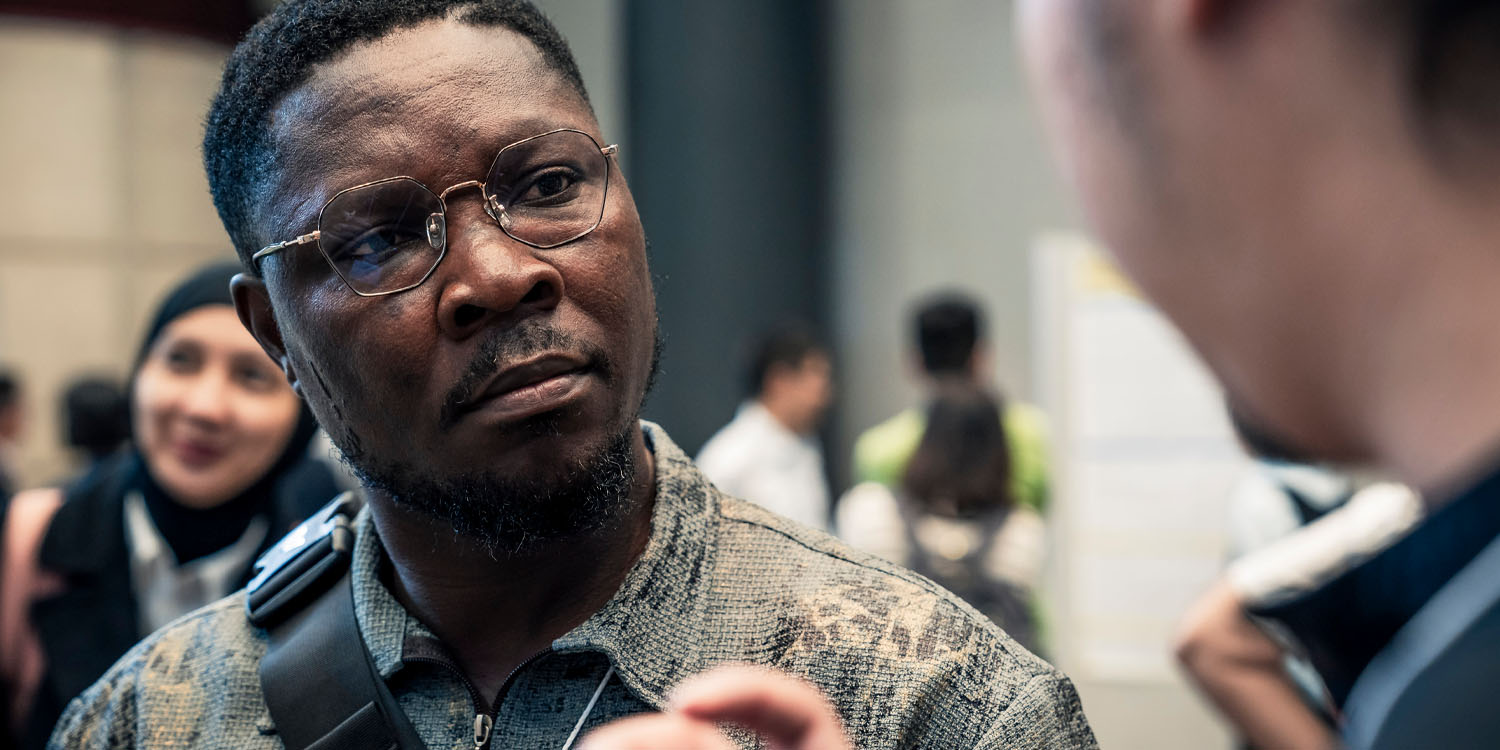
2.2. The Politics of Language: Rationality and Emotion in Academic Discourse
The devastating life experiences of marginalised and indigenous people often fall victim to western epistemology. When the response is one that cannot contain emotions, such as Professor Moy’s emotional outburst during his presentation, one may question if countering something emotional with rationality does the issue a disservice. By rationalising an issue, one naturally distances oneself from it and becomes an external observer, often unable to grasp the nuances of the issue and the people involved. This very rationale is what plagues international institutions today, as the international community evidently showcased with its indecision and inactivity regarding the genocide in Gaza, despite countless meetings and conferences. The same is true for tacit knowledge and its discredit by western epistemology, even though tacit knowledge can reach the same conclusions as a series of experiments and findings. How can something emotional or intuitive be discussed by appealing to emotion and still be considered scientific?
At one point in his speech, Professor Moy became emotional in recounting the ongoing "genocide" in Gaza. The situation in Israel has brought up two wider interconnected questions which have come up in the context of conferences recently. Both involve questions of what constitutes appropriate discourse in terms of style and substance in the academic context.
Academic discourse is supposed to be rational, not emotive or emotional, and instead derive its power and weight from the strength of its argument. In this account, writing, and speech should err on the dry. Of course, this is easier to do when writing about certain subjects than others, and easier to do when writing academic texts, than when delivering them in the form of a speech. How political can academia be, and how political should it be? What is the role of activism within the academy? How exactly does one write and speak about emotionally fraught subjects? Is it appropriate or inappropriate to be emotional, convey emotion or take sides? Does it do a disservice to the ideas espoused if one does?
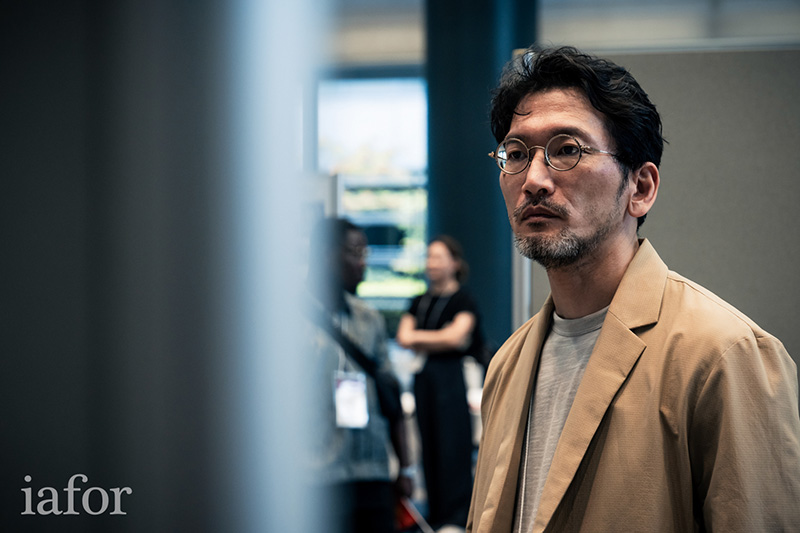

Guarantees of freedoms of speech have long been central to the modern academy, and given the role of education at the heart of civil society, the absence of any of these freedoms has been an indicator of totalitarianism. Questions of freedoms of speech in the academy have been centered recently through the lens of the situation in Israel, where the massacre of October 7 was responded to by multiple and ongoing massacres on the Palestinian people, and therefore constituting what many argue to be genocide. This legal term may have a very specific definition but its use is now widespread, bringing into question which individual or body has the right to term something genocide, and conversely which does not? Should the term only come into effect if and when it is "officially" deemed, so following judgement by whatever court? Is a murderer not a murderer before they are convicted? Like murder, is genocide not really also part of common law? Didn't it exist before, above and beyond its codification? Who gets to judge? Who gets to speak?
3. Media and Power in the Asia-Pacific
To mitigate the marginalisation of certain minority communities in society as well as the misguidance of the public by the powerful few, the media has traditionally been expected to play the role of the watchdog. Impartial, unbiased, and free media that disseminates information to raise awareness, functions as a tool for checks and balances, and keeps an informed citizenry is one of the cornerstones of democracy. According to Dr Virgil Hawkins, Professor of International Politics and Media Studies at the Osaka School of International Public Policy (OSIPP), Osaka University, the idea is that ‘the media is an important pillar of [democracy] because it gives us the information that we need to make judgements: whether it’s who we want to be selected as our leaders, or how our society functions in general’.
However, in its endeavour to serve as a watchdog, the media often loses the contest between remaining unbiased and becoming a propaganda tool in the hands of those in power. In a panel consisting of IAFOR Global Fellows and moderated by Dr Hawkins titled ‘Media and Power in the Asia-Pacific’, this often neglected relationship between the news media and those in positions of power was discussed. The panellists shared perspectives from Japan, China, and the wider Asia-Pacific region to illustrate how media is often misused as a tool to further agendas and national or personal interests. Questions of coverage, corruption, and national sovereignty and identity were raised to show the media’s inability to function effectively as a watchdog in Japan and China.
Opening the discussion, IAFOR Global Fellow Azusa Iwane focused on ‘the relationship between political/economic elites and the news media in Japan’ in her part of the panel presentation. According to her, issues of global concern, although initially unreported by the news media, are widely reported after acknowledgement of their importance by political or economic elites through specific international gatherings and conferences. To make this point, she demonstrated how media coverage of certain topics within Japanese media, such as ‘Global South’ and ‘plastic litter’, peaked right after the G7 and G20 meetings, during which these topics were addressed.
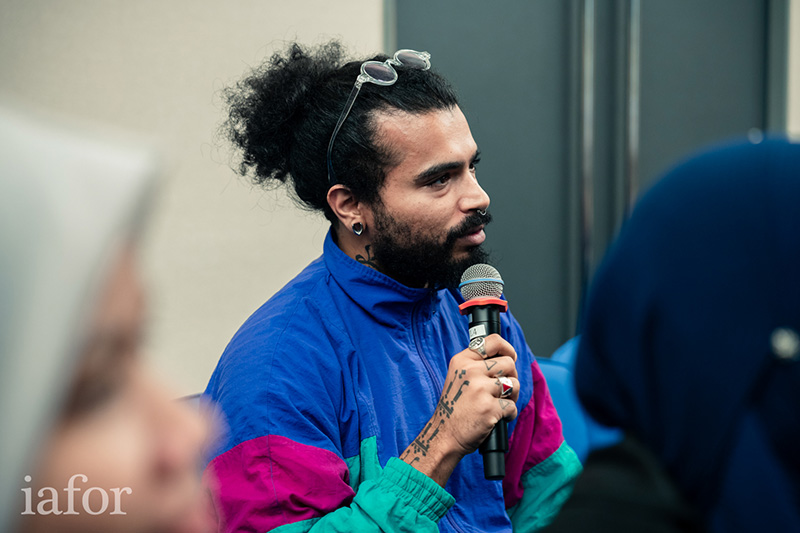

Her assumption that Japanese news media coverage tends to coincide with international meetings and conferences proved to be erroneous, though, as there were some cases where news coverage of certain topics did not peak after international meetings. For instance, the Paris Agreement on Climate Change, negotiated by UN member states at the 2015 United Nations Climate Change Conference (COP21) near Paris, should have pushed for news articles related to climate change in Japan. However, climate change issues peaked only a few years after, when United States President Donald Trump heavily criticised climate change in the United States. This illustrates how significant the United States’ influence is on Japanese media coverage and the dangers of external interference on domestic agenda setting on global issues.
In this sense, the agenda-setting of domestic issues is also at risk of powerful elite manipulation in Japan. In her presentation titled ‘Does the Japanese media perform its watchdog role?’, Sonja Viktorija Anić from Osaka University, Japan, showed how self-censoring due to political pressure is a serious violation of freedom of the and a violation of individuals’ and minorities’ rights for representation within Japanese media.
The influence of the dominant Liberal Democratic Party (LDP) of Japan in agenda-setting and censorship issues has been undeniable since the party’s rise to power in 2012, spearheaded by Prime Minister Shinzo Abe. Since then, political elites have taken a series of actions that have put journalism under threat. For instance, in 2014, the Japanese government passed a state secrets act, criminalising whistleblowing. The law came as a response to the release of information by Julian Assange through his platform WikiLeaks, and declares the possession and dissemination of information considered a state secret as illegal and punishable by law. According to Dr Hawkins, ‘one of the many problems with that law is that, first of all, it is not entirely clear what a state secret is and, secondly, just the very possession of state secrets is against that law. This makes journalism extremely difficult because you lose the ability to be a watchdog’. Other self-censorship issues involve the threat to revoke journalists’ and broadcasters’ licences if their information is deemed politically biassed or too critical of the government, and the appointment of government-friendly Momii Katsuto as Japan’s National Broadcasting Corporation’s (NHK) head, in an attempt to control the media.

The existence of kisha clubs, defined by the Japan Newspaper Publishers and Editors Association as ‘voluntary institution[s] for news-gathering and news-reporting activities’ (Nihon Shinbun Kyokai), further stifles media freedom. Kisha clubs are made up of journalists who regularly collect news from public institutions and other sources. However, they are by nature exclusive, as membership is required to enter those clubs and attend public institutions’ press conferences, during which such institutions disseminate information. This means that information is not open-access, and smaller newspapers, foreign media, and freelance journalists are excluded from obtaining crucial information.
Through her case study on Japanese media coverage of the devastating Tohoku earthquake and nuclear disaster in Fukushima in 2011, Sonja Viktorija Anić looked through and compared Japan’s three largest newspaper outlets (Asahi, Mainichi, and Yomiuri Shimbun) to see what their coverage focused on and how critical the editorials were towards the government. She concluded that, especially after 2014, when the state secrets act was passed, criticism against the government decreased sharply, with the media either not blaming anyone directly or blaming other media outlets. Due to ambiguity and fear fostered by the state and public policy, Japanese media ends up censoring itself in fear of being punished. Thus, political and economic elites hold immense power over and exercise enormous influence on Japanese media in covering both domestic and international affairs.
However, media coverage and representation issues are not confined solely within state boundaries, but they can also extend to international relations. Specific framings and rhetoric, along with deciding what should be covered by national media outlets are effective tools for nations to navigate through geopolitical contexts and conflicts. Questions of establishing sovereignty, building national identity, and furthering national interests within a competitive international arena are answered by governments through the use of media.
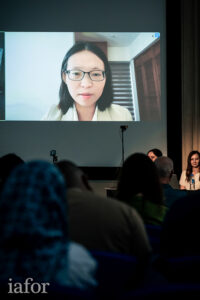
How major powers use competing media narratives to establish their sovereignty was the main discussion point in Dr Shuqi Wang’s presentation ‘Indo-Pacific or Asia-Pacific: Competing Media Narratives Among Major Powers’, as part of the panel on Media and Power. She asserted that media narratives play a big role in the militaristic and economic competition between great powers, through acquiring agenda-setting power and engaging in status-seeking behaviours. Through her case study on how media in Japan, China, the United States, and Australia define the region they belong in, she showed how choosing to be seen as belonging to the ‘Asia-Pacific’ or the ‘Indo-Pacific’ region is a result of geopolitical competition between these four Asia-Pacific countries.
Specifically, she defined the Asia-Pacific region as a connection between Northeast and Southeast Asia with Oceania and America, with a primary focus on economic relations. On the other hand, the definition of what constitutes the Indo-Pacific region is ambiguous, so countries have the ability to choose whether they are part of this region or not. An important part is that the Indo-Pacific focuses on maritime security, which is arguably more contentious than economic partnerships. According to Dr Wang, the media takes advantage of this ambiguity and furthers geopolitical interests, thereby also creating more contestation between fragile geopolitical relations.
The importance of media in navigating through complex relations between members and groups of society, state-society, and international relations is undeniable. Media has traditionally been viewed as raising awareness of social and political issues and keeping the citizenry informed, so that it can make important decisions about the future. If the media does not fulfil this role but is, instead, used to further certain interests of the powerful few, it may be seen as endangering democracy itself. Media needs to be careful not to perpetuate already existing injustices, and it needs to stray away from the Thucydidean view that ‘the strong do what they can and the weak suffer what they must'. A new digital age is calling for more responsible media. What does responsible media look like? The next section will discuss this in detail.
4. Global Citizenship: Media and Digital Citizenship
From international relations and intra-governmental engagement with media to distant communities and underrepresented minorities, as consumers and reproducers of information, art, and communication, we tend to underestimate our influence on media coverage and algorithms. The invention of smartphones and audiovisual recording equipment, the digitisation of media, and the introduction of social media as a mass communication tool have given the masses great power to determine the flow of information and the consumption of alternative media and art. With just a tap or click away from (re)sharing content online, individuals can cover stories that news outlets choose to ignore, and artists can share their work without going through an institutional middle-man.
However, with great power comes great responsibility. Digital media today has democratised the access to and consumption of information and media from all over the world, fostering empathy and understanding, and creating a sense of global social responsibility. This digitisation of information changed the traditional notion of citizenship and civic engagement, giving rise to debates around global and digital citizenship through social media platforms. It is now possible for citizens of any nation to engage with distant countries’ social, economic, and political systems by raising awareness of global issues, and even actively participating in traditional civic activities such as volunteering, donating, and advocating for sustainable development solely through social media.
The mobilisation of people through Facebook during the Arab Spring in the 2010s is a striking example of how social media was used for information sharing, resource mobilisation, and efficient organisation of social movements in the digital age. Movements like the #MeToo and #BlackLivesMatter movements also benefited greatly from social media, spreading information globally and raising awareness beyond the United States. Notably, the #MeToo movement’s spread across South Korea occurred quickly and organised a marathon protest – 2018 minutes of nonstop personal retellings of sexual harassment by 200 women – in downtown Seoul. South Korea’s cultural soft power is also felt through social media, with the example of K-pop band BTS’s fandom donating blood and food to charities, raising $1 million for #BlackLivesMatter in only one day, organising charitable fundraising, and creating sustainable development projects worldwide. Digital civic activities are clearly on the rise, transcending borders and cultures.
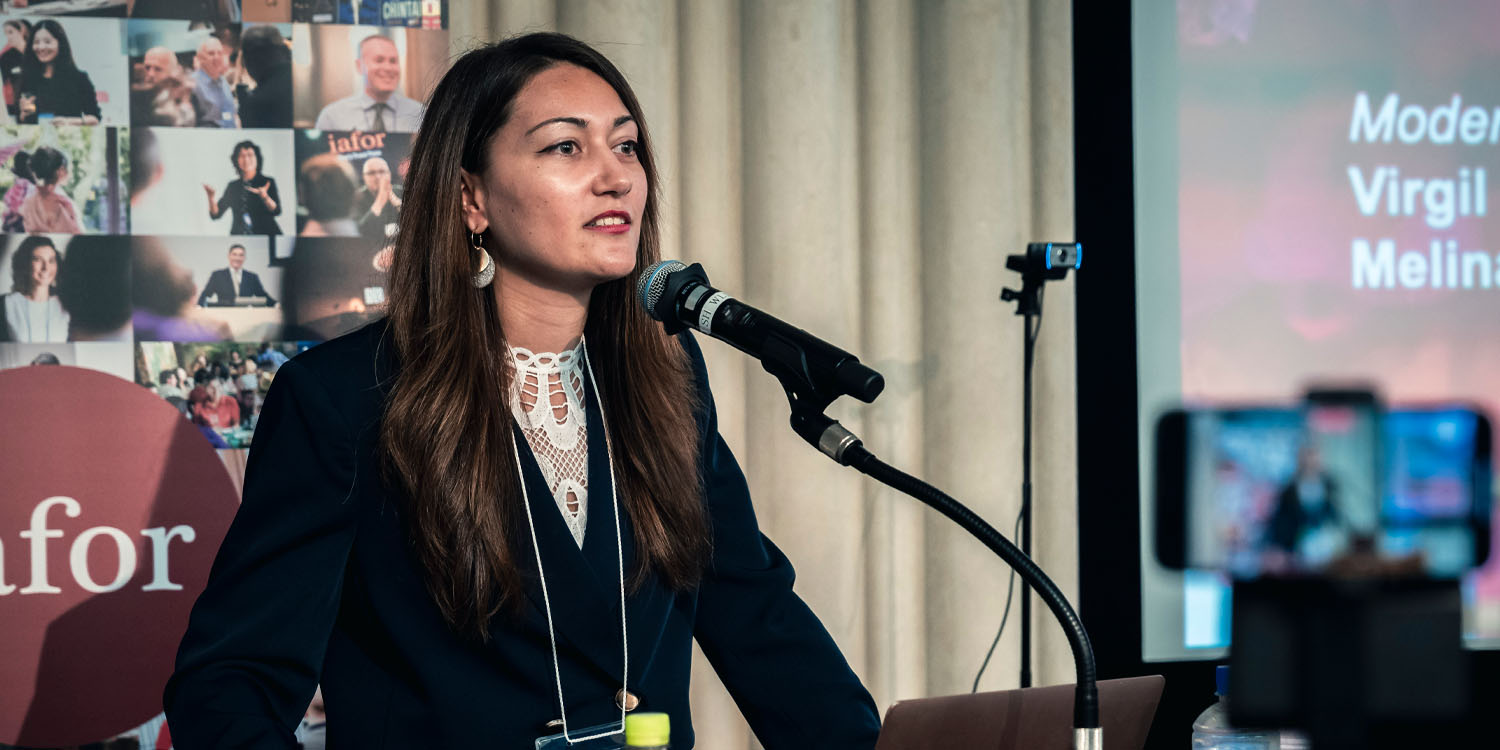
However, this does not mean that digital media has now become a trusted source of information. In fact, in Europe and North America, social media is regarded as the least trusted news source. The introduction of digital media and communication has simply transferred the power of information sharing and communication from the few to the many. Issues of media literacy and the spreading of misinformation have become much more prominent than ever before. The introduction of Artificial Intelligence (AI) raises further concerns about accountability and trust, while it can also violate notions of privacy and intellectual property. It has become difficult to distinguish between original and AI-generated content, so much so that policymakers and social media platforms are now discussing whether digital content should be watermarked when AI-generated.
The digital divide further exacerbates these issues, threatening democracy by marginalising certain groups who lack access to information and communication. Taking the communicative entitlement away from certain groups creates exclusive media and uneven access to political resources, effectively marginalising the ‘other’, as Professor Gayman and Professor Moy effectively communicated in their speeches.
The Forum series’ session in Kyoto invited delegates to explore and expand upon these very topics giving participants the opportunity to openly discuss how to responsibly produce and consume information, knowledge, and art in the digital era. This Forum session on ‘Global Citizenship: Media and Digital Citizenship’, moderated by Dr Virgil Hawkins and Dr Melina Neophytou, touched upon issues of representation, power, colonialism, AI, freedom of speech, censorship, and critical media literacy. Participants conferred about what each one of us has the power and responsibility to do to ensure fair representation of marginalised narratives, check and balance elites’ power over media usage, and control hate speech online. While powerful economic and political elites seem to have immense influence over representing specific narratives, citizens hold the key to fostering an equilibrium between competing interests.
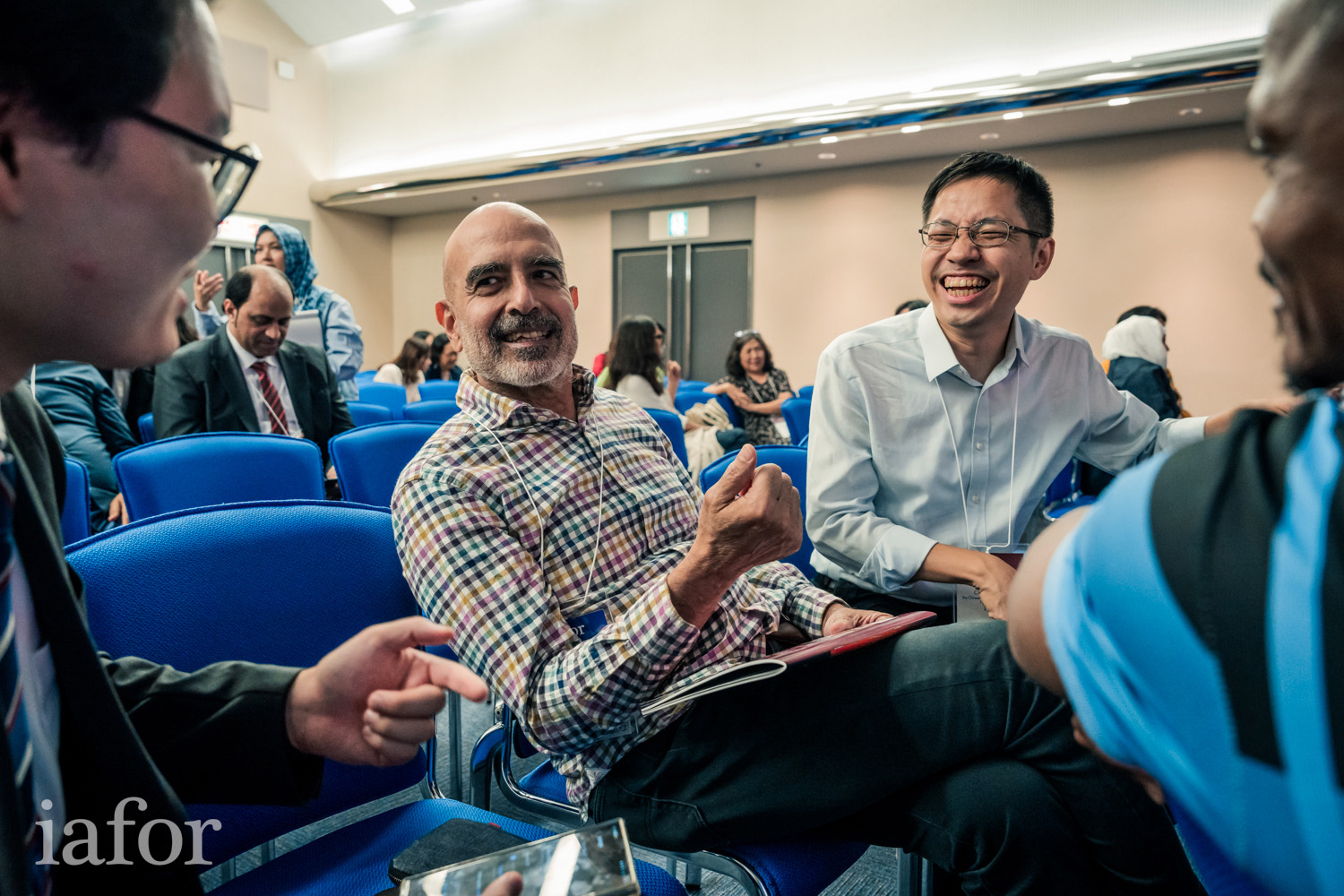
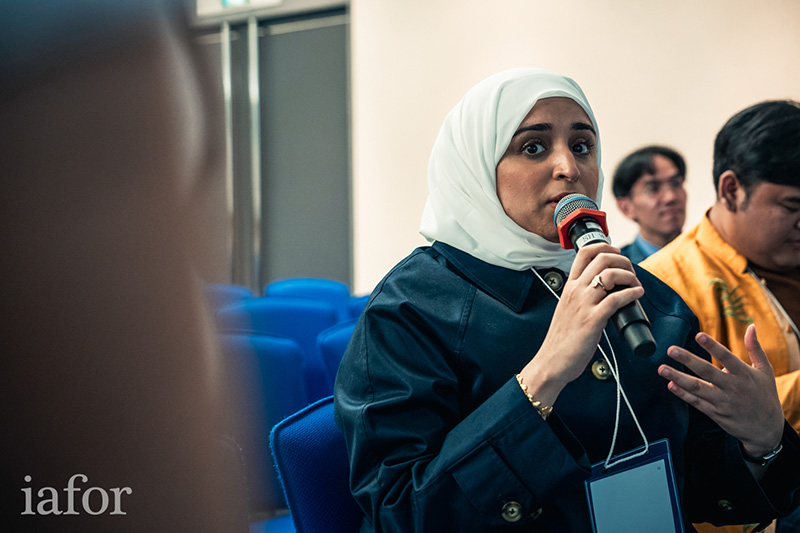
Starting off with an inquiry into what global digital citizenship means, delegates had opposing views, which reflects the difficulty in defining global citizenship in general. Global digital citizenship was seen as both cosmopolitan and as ‘loyalty to one’s country’, and as fostering both diversity and homogeneity at the same time. The complex nature of what it means to be global while retaining a sense of belonging to a local community has been one of the biggest obstacles to implementing global citizenship. Within this context, global digital citizens and globally-oriented media should strive to ‘make the invisible visible’, according to a delegate. She further explained that, whether global citizenship sees the planet as one homogenous space or made up of many different local narratives, ‘can the marginalised get access to media tools to make their voices heard’?
In order for the marginalised to get access to the communication stream through media and communicate their narratives effectively, both individuals and content creators have a responsibility towards consuming and producing content in an ethical and informed manner. Content ‘can go viral and reach a lot of people, so we have to be responsible when creating content’ said one participant. ‘The power to influence people is dangerous. Perhaps some of our beliefs are not necessarily for social media but for private social interactions’, he continued. Fact-checking was one of the most discussed issues among delegates and a skill that all agreed a global digital citizen should possess. ‘We have the responsibility to make sure that what we say and read is actually true. We can’t simply reshare something because someone put it out there’.
However, Dr Hawkins warned against recognising fact-checking as the panacea for misinformation which can lead to the perpetuation of social injustices. ‘Fact-checking is scary. Whose facts is it? What are we checking against?’ he asks. As the more powerful have a greater opportunity to promote their facts as ‘truth’, the media runs the risk of portraying these facts as a universal truth against which citizens should fact-check available information. In this regard, a delegate shared her upsetting views on billionaires ‘coming from an already problematic family legacy and having so much control over social media’ and how dangerous this is.


What does responsible consumption and production of social media look like, then? The majority of participants were quite pessimistic about the possibility of ever achieving the creation of responsible media. Many concurred that a sense of responsibility is first established through behaviour. Individuals exercise responsibility by checking their online behaviour and refraining from using or engaging in hate speech.
Anonymity was identified as the primary obstacle for responsible media. According to one delegate:
‘There is no accountability. We can say whatever we want and no one can control it. Anonymity online causes an absence of accountability. When I talk in front of people, I am very self-aware that people are looking at me. But when I am online and nobody is looking at me, I feel empowered to say whatever I want without repercussions’.
Responding to this, another delegate expanded on this view saying:
‘As long as there is no one to control our behaviour online, we get carried away with fulfilling fantasies of power and control. This has to do with self-control. And to impose self-control on everybody on the planet is impossible’.
‘Impossible’ was, indeed, the most popular word in the onsite-conducted poll asking to describe responsible social media. When discussing how to curb powerful elites’ power in using media as a tool to further their interests, some participants proposed censorship as a form of control. However, a large number of delegates expressed that it is exactly the act of censoring that renders responsible social media an impossible feat. ‘If you start censoring, there will be uprisings everywhere. Self-control is also impossible. Every time the government tries to impose something, there is always a backlash’, said a delegate. Another delegate constructively explained why this is the case:
‘Every social system employs some form of censorship. The problem is that it is not employed equally on different participants. In Western culture, there is a myth of agency. We think that as citizens we have a lot of power and influence: we can petition, demonstrate, and change things. To some extent, this may be true. But we have an inflated sense of our own influence. When we realise that our agency is limited, then we can take a fresh look at global citizenship’.
How to foster critical thinking skills and care in what we (re)share online to combat the spread of misinformation, but also agonistic negotiation and public engagement skills to ensure that we act towards mitigating injustice, are questions that remain unanswered in practice. While technology and digital communication are advancing, we should not forget to stay in touch with our human side and human intelligence. The European Conference on Education (ECE2024) held previously this year in London highlighted why it is important to bring the ‘human’ back into our daily communications and transactions with other people globally. Focusing on what defines human behaviour outside of the digital world may be the key to ensuring that the digital sphere becomes a microcosm of a just and responsible human society and not a disengaged, unlawful jungle, where only the powerful narratives prevail.

5. The Future of Media and Art
Globalisation and the rise of information technology have brought about significant social, political, and economic changes. Among these, the transnational movement of people, goods, services, and money, and how we produce and consume information, knowledge, and entertainment, have changed the communication landscape entirely. This has political and economic implications, especially for marginalised groups of society. Today, there is more potential for minorities to be seen and heard than ever before. With regional and global powers and western cultural and artistic hegemony being challenged, there is a window of opportunity for indigenous media and art to take centre stage in international communication. This section highlights keynote speakers’ and panellists’ views on the future of media and art.

5.1. The Future of Media News
The plenary panel on Media and Power in the Asia-Pacific concluded that media in the region, and especially in Japan, fail to perform their duty as watchdogs to ensure freedom of speech and fair representation. What needs to be done in order to change this and what does the future of Japanese media look like?
Check-and-balance tactics against political elites’ misuse of media has now become possible through bottom-up surveillance. Anyone is now capable of recording and uploading videos of government and law-enforcement officials through wearable computing devices and spreading those across the Internet, performing what researchers coined as ‘sousveillance’ – the bottom-up surveillance of state officials. While media was used as a propaganda tool during the 20th century to steer public opinion, with the introduction of digital media, it has become much more difficult for the state to use media as a form of controlling the masses.
However, these developments have not yet reached Japan, said Dr Hawkins. The question of whether sousveillance can be performed in Japan poses a particularly timely question, he said, as Julian Assange, the founder of WikiLeaks, has just recently been released from prison for doing this ‘surveillance from below’ in an attempt to hold those in power accountable. Assange has made a few public statements since his whistleblowing, and those in power are trying to keep his voice down. ‘In some ways, they have been somewhat successful in frightening those below to speak up’, Dr Hawkins argued. He shared his enthusiasm with technology’s ability and potential to give more power to the people instead, to perform watchdog duties of their own. However, he also heeded against becoming overly optimistic. ‘I think Japan has yet to discover its power in that regard. There is a huge potential with this ability to share information with social media. We are in a position where we could have great power as a watchdog and as something rivalling the traditional news media. I just don’t think we are getting it at the moment’.
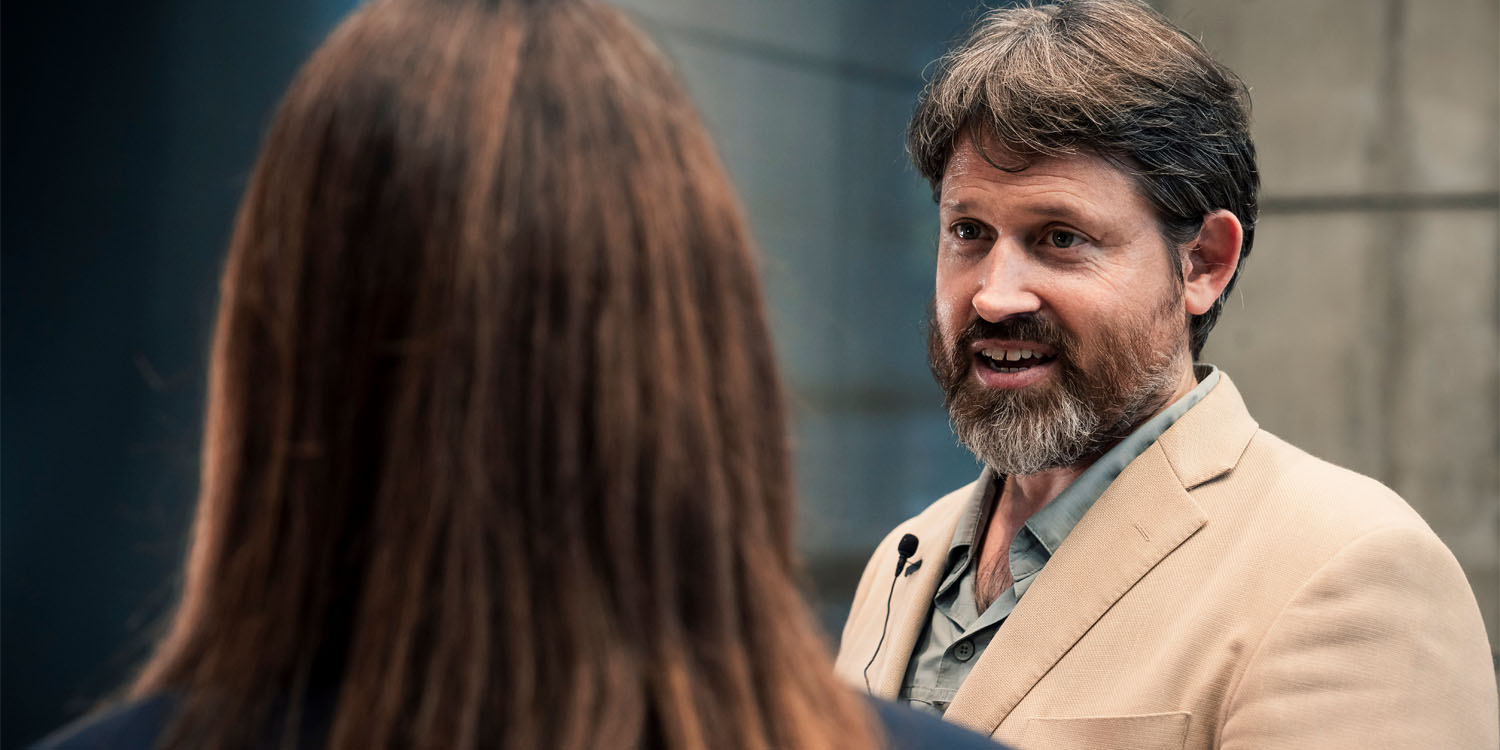
Answering whether this will change in the future, he reflected on the State Secrets Act of 2014, stating that even though this law has yet to be utilised, the threat of its use is still looming over Japanese society. As long as the law is not being used, people tend to forget that it exists. In a paradoxical way, by avoiding using it, the government effectively also erases the urge of changing it. Dr Hawkins was not very optimistic and remained reserved about future developments. ‘I think it would have to begin with someone actually challenging the law. That has not happened yet and I don’t see it happening in the near future’, he said.
As several innovations in Japanese policy have been initiated by foreigners, such as the law pertaining to sole custody of children in Japan, discussed during The Asian Conference on Arts & Humanities (ACAH2024) plenary earlier this year, there may be a potential for foreigners to initiate another policy innovation concerning media in Japan. ‘Certainly within the context of Global Citizenship, which has been a theme of this conference, the ability of other countries to influence what happens here in Japan is something that we might find helpful’, Dr Hawkins concluded.

5.2. The Future of Indigenous and Non-Western Art
Unlike information and news, artistic media follows the beat of another drum: capitalism. In an interview with IAFOR, Professor Moy explained how art and arts media have been influenced by similar processes that removed industrial production from the heart of the capitalist system and replaced it with finance. ‘Money is not made in industrial production’, he explained. ‘Industrial capitalism was about ‘making things’ and the excess value went to the owners of the company. We still have that. Workers get their low salaries and the owners of the company become multibillionaires. This has moved up to the financial realm now’.
The art scene has moved into a similar trajectory. Art collectors in Europe realised that there were huge financial gains in buying and reselling art at a higher price through art galleries. ‘Commissions [for galleries] at that point were about 50-60%, while the artists only got 40% [of the profit]’, Professor Moy explained. Eventually, in the mid-20th century, a group of artists got frustrated with not being able to sell their artwork at a decent price and rebelled against the gallery system.
However, art collectors and performing art labels have now found a fresh supply of artwork and, with it, a new revenue stream. The rising popularity of K-pop, Korean dramas, Japanese anime, and southeast Asian static artworks are a testament to the rising popularity of Asian art. Some may think that this is because of the decentralisation of art: a decline in western art’s hegemony, and a multicultural understanding and appreciation. However, according to Professor Moy, ‘that’s because there are increasingly more Asian collectors. In the past two years, there has been an increase in Asian collectors who buy art and resell it. There are new auction houses opening in China and Hong Kong. There is money to be made here, which is why there is a rise in Asian art’, he explained.
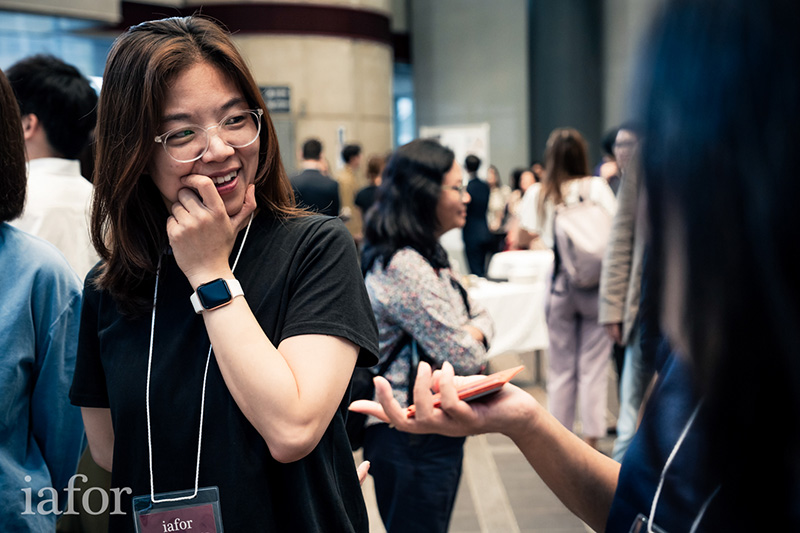
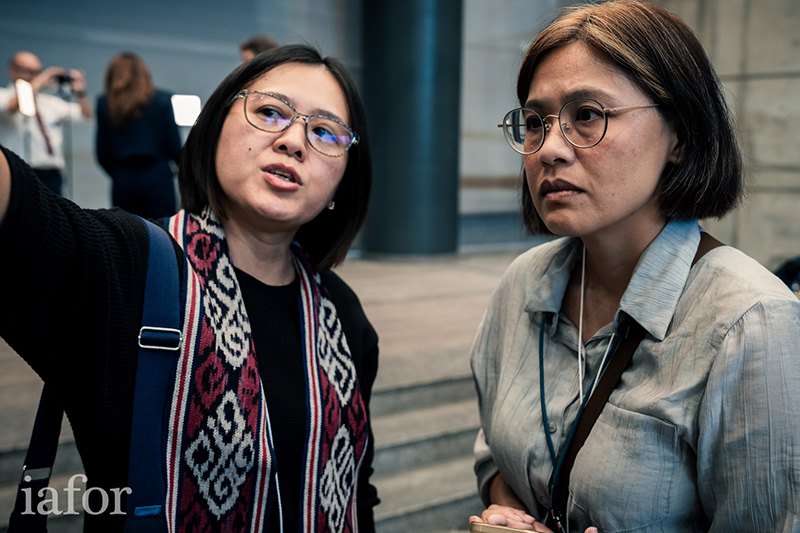
Because of this financial gain at the core of art’s decentralisation, there seems to be an ingenuine, conditional acceptance of non-western and indigenous art, which leads to the widely observed phenomenon of the westernisation of international art. For example, in the performing arts, K-pop has been accused of becoming too ‘Americanised’, including the production of songs in the English language, the use of western beats, and western fashion styles. The same is observed in static art, where composition and themes are inspired by original western artwork. Professor Moy explained why this is the case: ‘how one analyses and understands indigenous work to be worth in terms of value is how it connects to the history of western European art. If it’s about money, they will find a way to connect it to Western art’.
This may be seen as another case of neo-colonialism, especially from the point of view of art collectors and galleries. However, according to Professor Moy, from the point of view of the impact on geopolitical matters, there is much more potential for art than its commercial value. On the other hand, it is understandable that artists need to make a living as well, he stated.
Concluding on a more positive note, Professor Moy was very hopeful of the future of indigenous art and media as a tool for political resistance and change. Art has always been used as a form of expression of its zeitgeist and has had geopolitical impact. One need not look further than Delacroix’s painting ‘Liberty Leading the People’, in which Lady Liberty proudly waves the French flag during the 1830 Revolution that marked the end of the Enlightenment period. The infamous painting was the inspiration behind Al Hawajri’s artwork that infused the Palestinian resistance to occupation within the historic composition. In regards to running the risk of losing Asian distinctiveness in art due to its westernisation, he responded that this is hard to tell. ‘I think in time, such work [as the Palestinian depiction of resistance] will become very valuable. In 20 or 30 years from now, it may be assessed that these works were impactful in changing the government’.

6. Conclusion
The Kyoto Conferences on Arts, Media & Culture (KAMC2024) and Media, Communication & Film (MediAsia2024) raised some timely questions around power and representation in media. Those who control the means of expression and the dissemination of information also control whose voices can be heard. This has important implications for issues that sit at the core of politics: the distribution of resources, the acquisition of which ensures the survival of societal groups and communities. Those without access to information, but also without the opportunity to input information back into the communication stream, naturally have a harder time representing themselves in the political arena, raising resources, and ensuring their survival. The cases of the indigenous Ainu people of Japan and indigenous art from non-western cultures exemplify this power struggle and the observed marginalisation of those who do not have access to media and communication.
However, their struggle also showcases incredible resilience as they relentlessly counter western hegemonic structures in both news media and art. Artists, who have, in general, always struggled with the commodification of art, are learning to work with unfavourable capitalist structures. As the art sector is currently expanding in Asia, indigenous communities and non-western artists are taking advantage of media to ensure fair representation. Some communities have somewhat been successful in raising awareness through their artistic expression, as seen at international exhibitions like the 2024 Venice Biennale. Even though the risk of neo-colonialism exists, with indigenous art potentially being absorbed into western cultural expressions as Professor Moy stated, there is still merit in the rise of Asian and indigenous art. Their mere existence and popularity could be sufficient to guarantee them an elevated spot within the global political arena, in which they challenge and inhabit the structures that have traditionally excluded them from the communication stream.
On the other hand, in terms of news media, Asian societies, notably Japan, still have a long way to go to ensure freedom of expression and freedom of the press. News media seem to be at the mercy of those in power, as political and economic elites abuse the media's power to further their own agenda. Local issues and issues faced by marginalised communities are often overlooked and underrepresented in favour of individual or national interests. In this sense, biassed and exclusive journalism endangers democracy itself in the Asia-Pacific region. Challenging laws that pose a threat to journalism seems extremely difficult under the current situation, as journalists fear for their survival. As Dr Hawkins stated, the challenge might have to come from external pressure, but that would require Japan’s allies to find a compelling reason for doing so.
In the end, the conference highlighted that it takes great effort and will to change the status quo, and that our individual efforts are the starting point for this change. Our individual behaviour online and critical media literacy are of paramount importance in ensuring factual production of content and information, fair representation, and a humane approach to global digital communication.

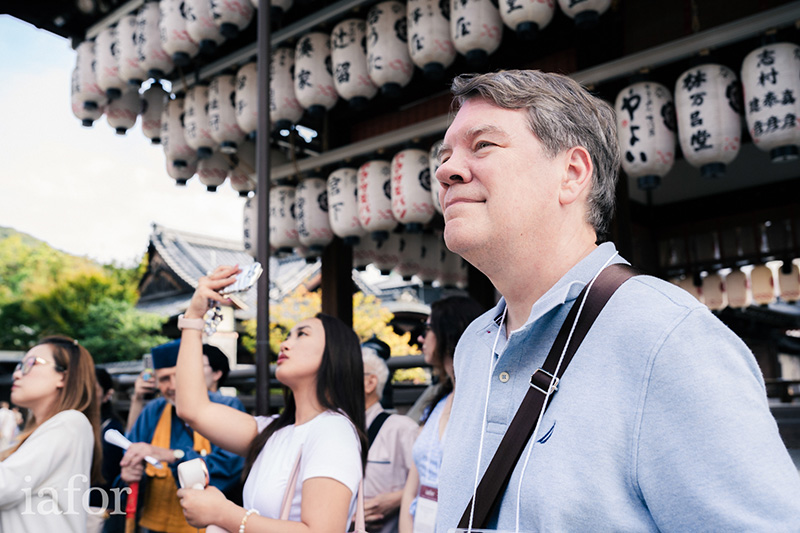
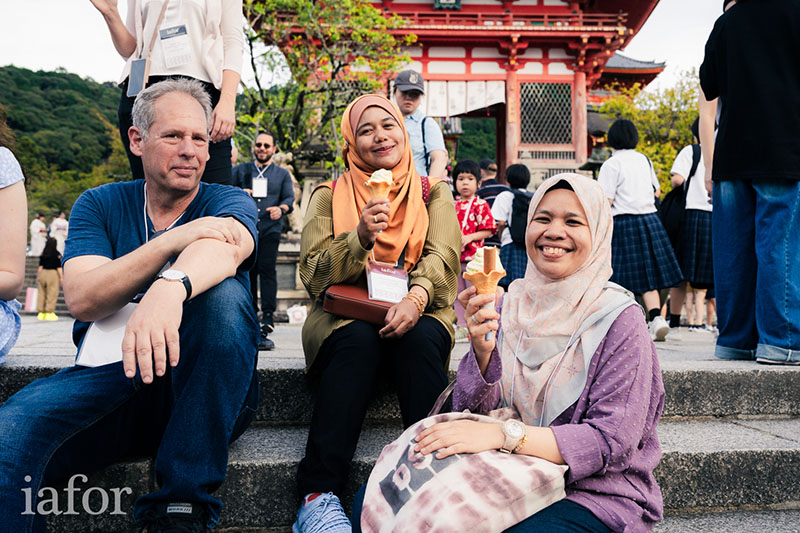
7. Conference Networking and Cultural Events
Networking events within our conference programmes provide designated spaces for open discussion, forming professional connections, and inspiring collaboration within and outside the conference venue. The KAMC/MediAsia2024 itinerary featured a variety of such spaces, sharing them alongside returning delegates and new members alike.
The 2024 Autumn Conference Series in Kyoto began with a pre-conference Cultural Tour: A Day in Historic Kyoto, an afternoon walking tour of the historic city’s most revered cultural sites on Tuesday, October 15. Considered the cultural capital of Japan, Kyoto is home to many UNESCO Cultural Heritage sites that have been largely spared from destruction during WWII. Before the capital of Japan was relocated to Tokyo during the Meiji period in 1869, Kyoto was the old capital of Japan. Being closed off from the rest of the world until then, Kyoto could preserve its old, traditional Japanese culture and architecture, which is still evident today. The tour, led by Professor Brian Victoria of The Oxford Centre for Buddhist Studies, provided guidance and insight into these culturally key landmarks encountered along the tour, including Yasaka Shrine and Kiyomizu-dera Temple, two sites which possess over a millennia worth of history each. Kiyomizu-dera, literally meaning ‘pure water’, is a 778 established Buddhist temple, which is part of the Historic Monuments of Ancient Kyoto UNESCO World Heritage Site. Yasaka Shrine, located in the famous Gion district of Kyoto, is another important cultural site which hosts the annual Gion matsuri, the oldest festival in Japan. Serving as the introduction to KAMC/MediAsia2024, the Cultural Tour exemplified why Kyoto is the most appropriate location to discuss Arts and Culture in Japan, and inspired delegates to make relevant connections to their own research topics. It also provided the opportunity for early arrivals to ease into the conference programme and get to know other academics in a more relaxed setting.
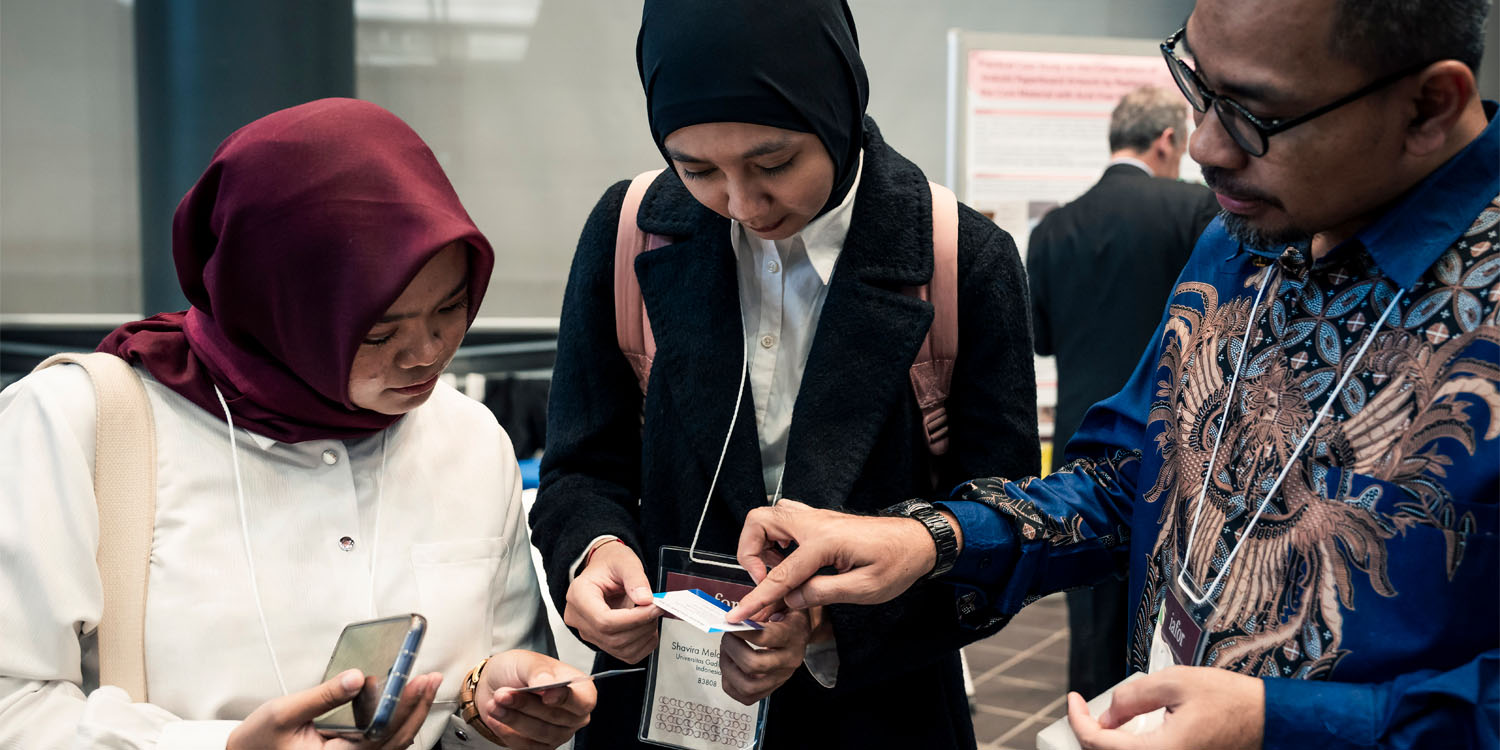
The Conference Welcome Reception was held on the first plenary day on Wednesday, October 16, alongside the Conference Poster Session in the Atrium of Kyoto Research Park. As always, the Welcome Reception is designed as a networking event open for all registered delegates to attend, and the inclusion of the poster presentations provided plenty of research ideas to discuss as well as opportunities to engage with new colleagues.
The Welcome Reception was closely followed by the Conference Dinner, held the same evening at Yachiyo Nanzenji, a traditional ryokan - a Japanese style inn. The ryokan, which was first established as a fish shop and officially became an inn during the Hideyoshi Toyotomi era (1586), combines traditional Japanese architecture and landscape (including a Japanese garden) with local Kyoto cuisine. Delegates could enjoy the inn’s speciality, Yudofu (Tofu in hot pot), along other Japanese dishes that represent the four seasons - a characteristic that is very central to Kyoto cuisine. Therefore, delegates were able to experience another cultural hallmark of Kyoto and the ‘old’, authentic Japan.
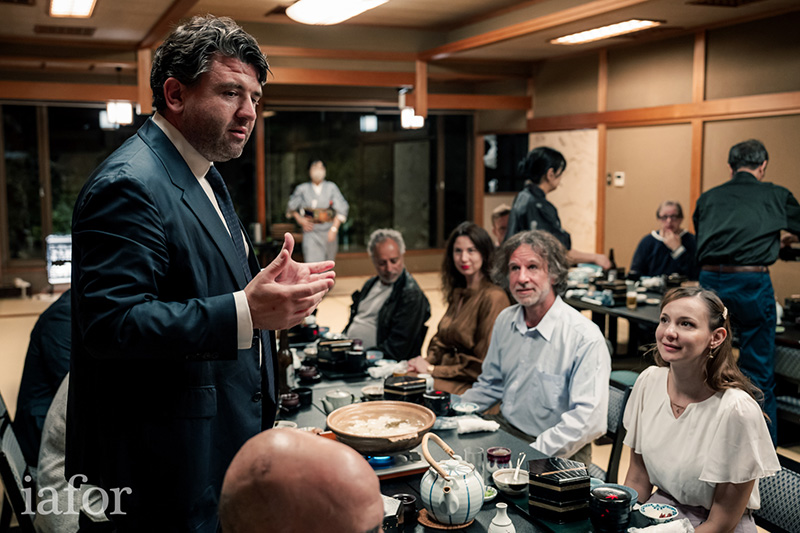
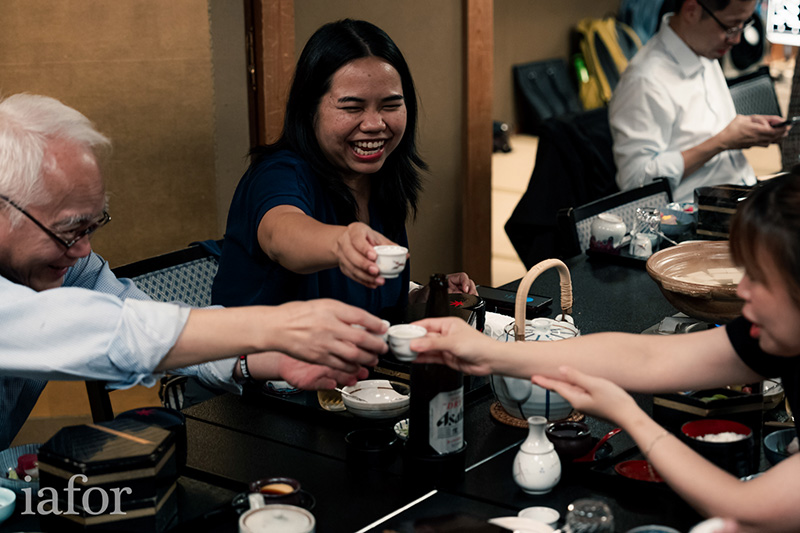

The Conference Dinner joins keynote speakers, presenters, and delegates altogether to rekindle topics introduced and discussed during the conference plenary programme over a course meal of traditional Japanese dishes. Delegates were able to get to know IAFOR’s 2024/2025 cohort of Global Fellows and speak with them further about their plenary panel, Media and Power in the Asia-Pacific. Conversations were also carried over from The Forum, an ongoing forum-style discussion panel with the media-centred topic of Global Citizenship: Media and Digital Citizenship, perfect for breaking the ice before the parallel presentations scheduled for the next day. The networking and cultural events have been among the most enjoyable sessions for delegates, as they give them the opportunity to experience local culture, make memories, and form bonds that last long after they have returned to their home countries.
Subscribe and Stay Informed
Receive key insights directly to your inbox.
Stay informed of the latest developments in academia.
100% free to read, download and share.

KAMC/MediAsia2024 Key Statistics
Delegate World Map & Country Breakdown
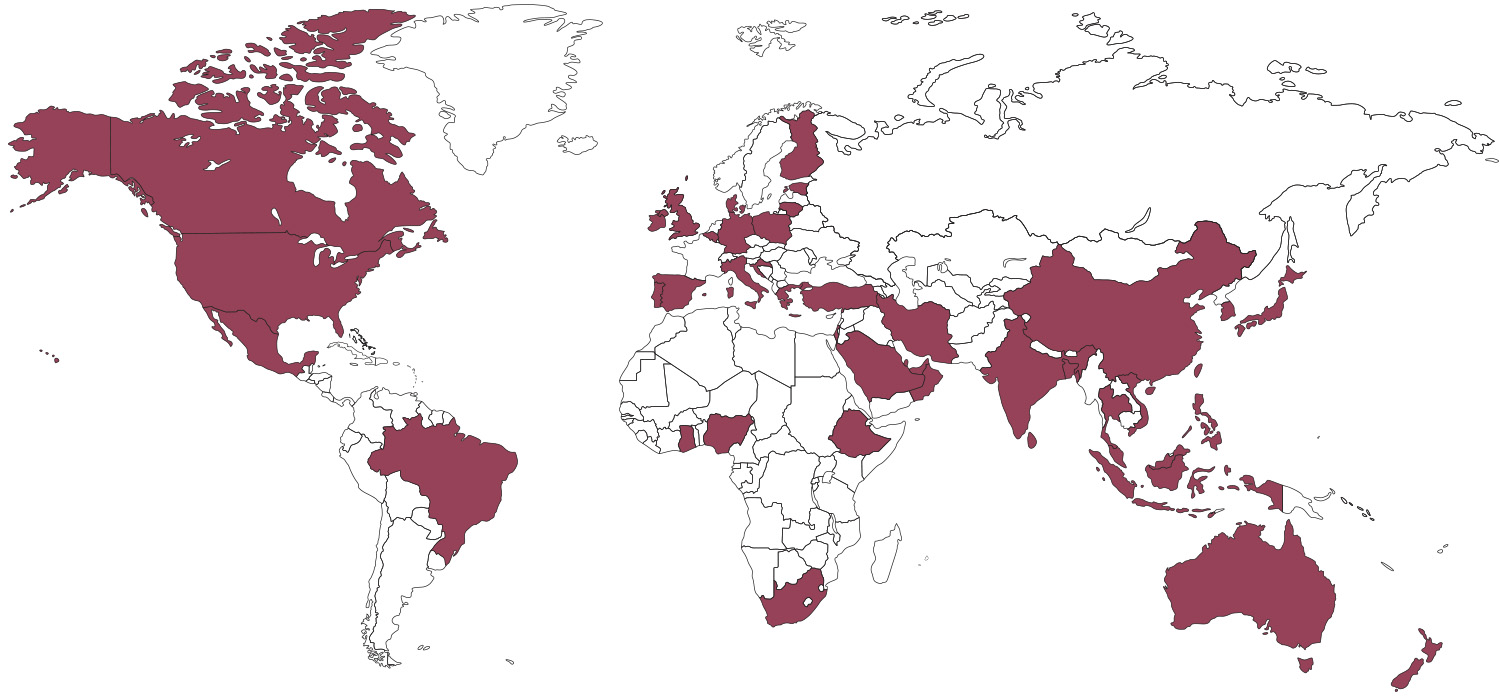
Total Number of Attendees: 348
Total Number of Countries Represented: 47
| Country | Count |
|---|---|
| Indonesia | 56 |
| Thailand | 33 |
| Japan | 25 |
| Taiwan | 25 |
| United States | 22 |
| Philippines | 21 |
| United Kingdom | 27 |
| Malaysia | 15 |
| United Arab Emirates | 12 |
| Hong Kong | 10 |
| India | 10 |
| South Africa | 10 |
| South Korea | 9 |
| Australia | 8 |
| China | 8 |
| Singapore | 6 |
| Canada | 5 |
| Lithuania | 5 |
| Vietnam | 5 |
| Israel | 4 |
| Belgium | 3 |
| Germany | 3 |
| Italy | 3 |
| Turkey | 3 |
| Country | Count |
|---|---|
| Denmark | 2 |
| Ghana | 2 |
| New Zealand | 2 |
| Poland | 2 |
| Portugal | 2 |
| Qatar | 2 |
| Bangladesh | 1 |
| Brazil | 1 |
| Croatia | 1 |
| Estonia | 1 |
| Ethiopia | 1 |
| Finland | 1 |
| Greece | 1 |
| Iran | 1 |
| Ireland | 1 |
| Macau | 1 |
| Mexico | 1 |
| Nigeria | 1 |
| Oman | 1 |
| Pakistan | 1 |
| Saudi Arabia | 1 |
| Spain | 1 |
| Sri Lanka | 1 |
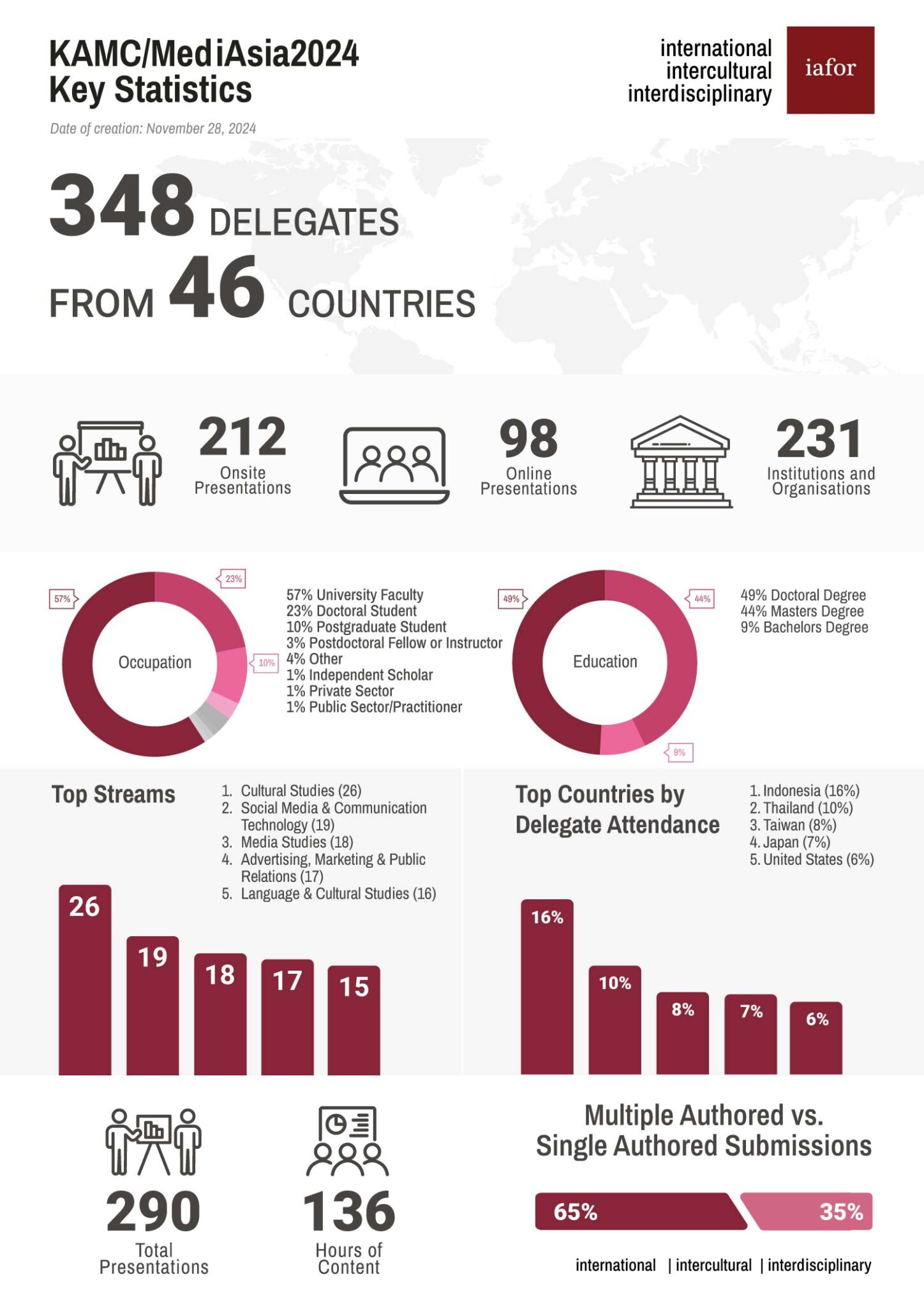
Subscribe and Stay Informed
Receive key insights directly to your inbox.
Stay informed of the latest developments in academia.
100% free to read, download and share.


